
I can’t go anywhere without stopping at ghost towns or historical sites. I stopped at many amazing sites on my first trip to Thunder Ranch in Lakeview, Oregon. But, due to the snow, some photographs weren’t the best and other sites were inaccessible. On my second trip, I stopped at a few more locations, but coming home was a blizzard so my only goal was to get home safely. My favorite stop on the first trip was the Willow Ranch sawdust burner.
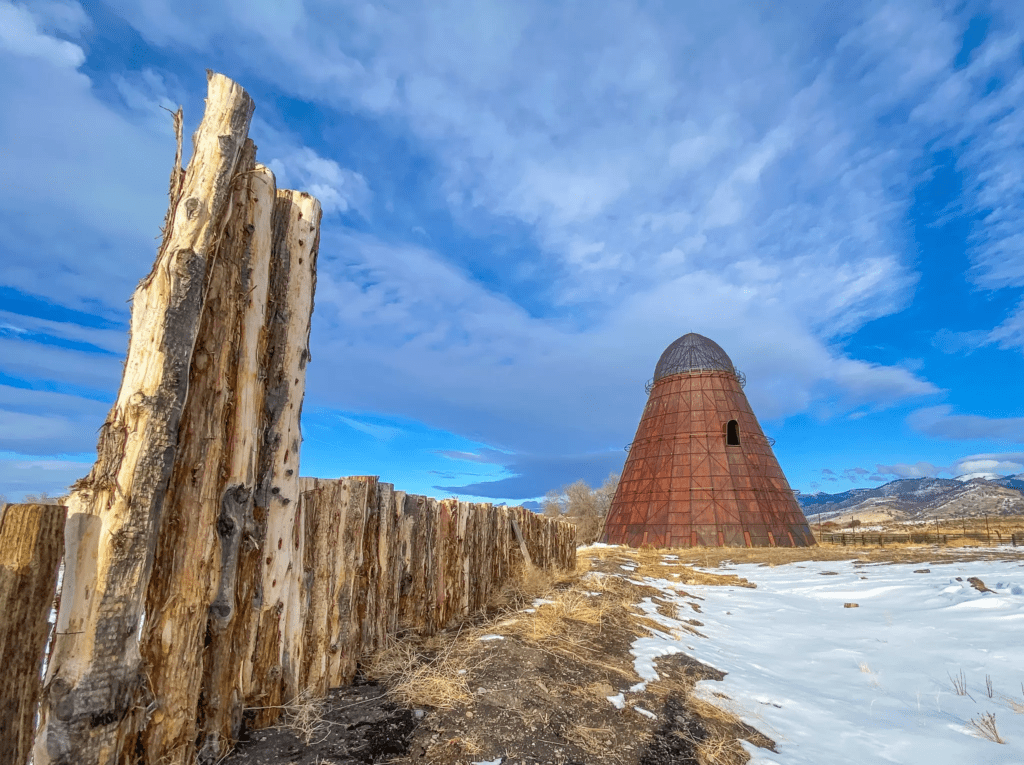
This trip was my chance to re-photograph some places I previously saw while visiting new ones. The weather was beautiful this trip: sunny and in the upper 70s. It was a totally different feel than snow and sub-zero temps.
Nevada, California, and Oregon Railway
Planning my first trip, I stumbled upon the Nevada, California, and Oregon Railway (N.C.O). Conflict with the railway led it to be nicknamed the “Narrow, Crooked, and Onery” and the “Northern California Outrage.”

Survey work for the N.C.O Railway began in 1880 to save construction costs; the line was narrow gauge. Construction started in Reno, with the first spike driven on May 28, 1881. The original plan was to build north to The Dalles, with spurs to Klamath Falls and Eugene.
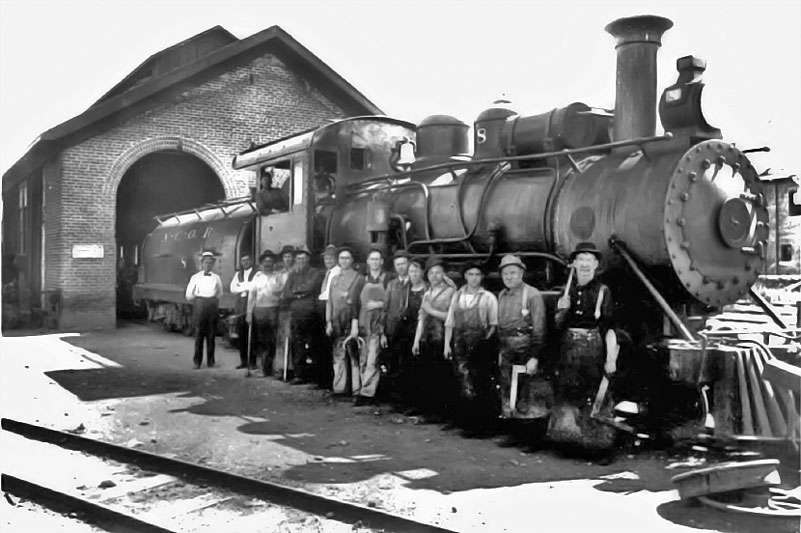
(Photo credit: Noe Hill)
Due to infighting and monetary issues, progress was slow. The company was fraught with issues. At one time, two boards were separately trying to run the company. Two men were shot at an infamous stockholder meeting in Reno on September 27, 1881. Although Daniel Balch recovered from his wounds, Squire Scoville was not so fortunate. The trial made history, the first time a court hearing in Nevada was transcribed on a typewriter.
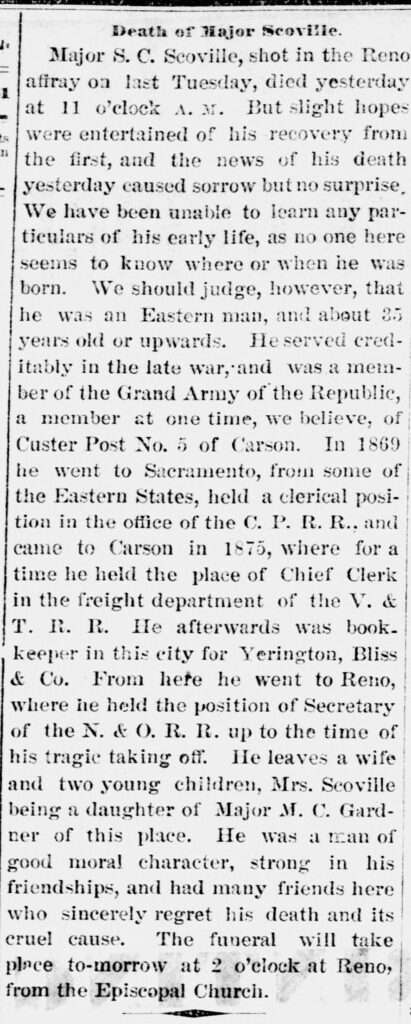
Service arrived in Alturas, California in 1908 and in Lakeview, Oregon, in 1912. The N.C.O. declined after 1913. The Reno Depot was closed in 1918 and headquarters were moved to Alturas, California. Southern Pacific Company purchased the Nevada, California, and Oregon railroad on April 30, 1925.
Many of my stops were related to the N.C.O.
Milford
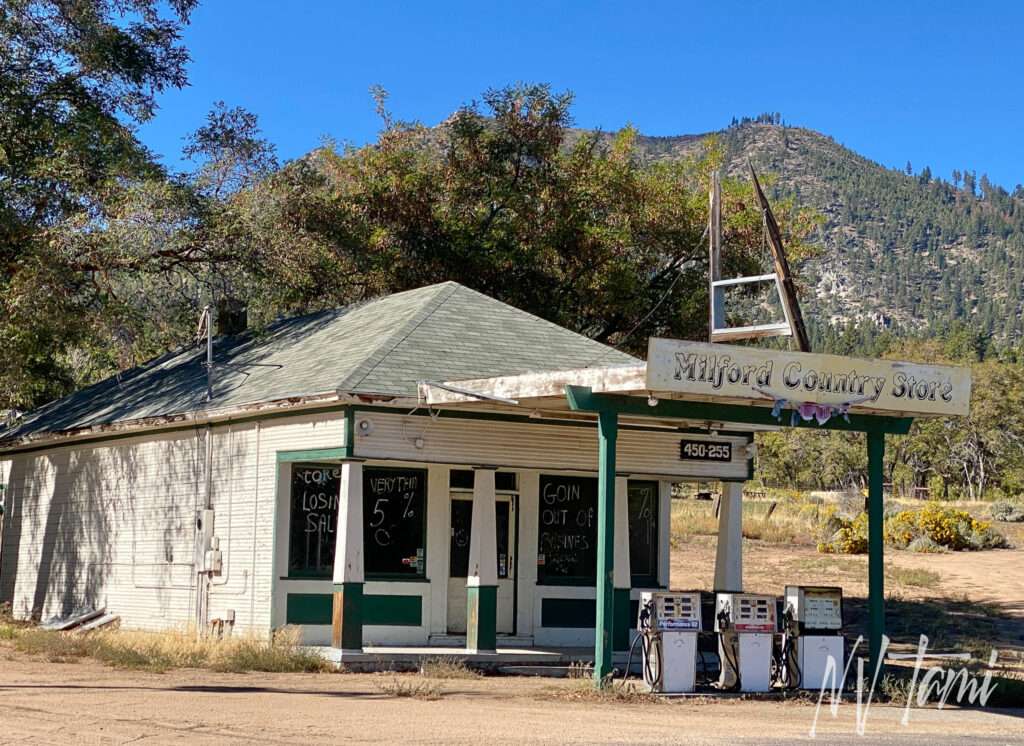
Milford was settled in 1856, making it one of the oldest settlements around Honey Lake. Settlers built the first flour mill in 1861. A post office opened in 1864, and Milford had mills, blacksmithies, hotels, stores, and a school.
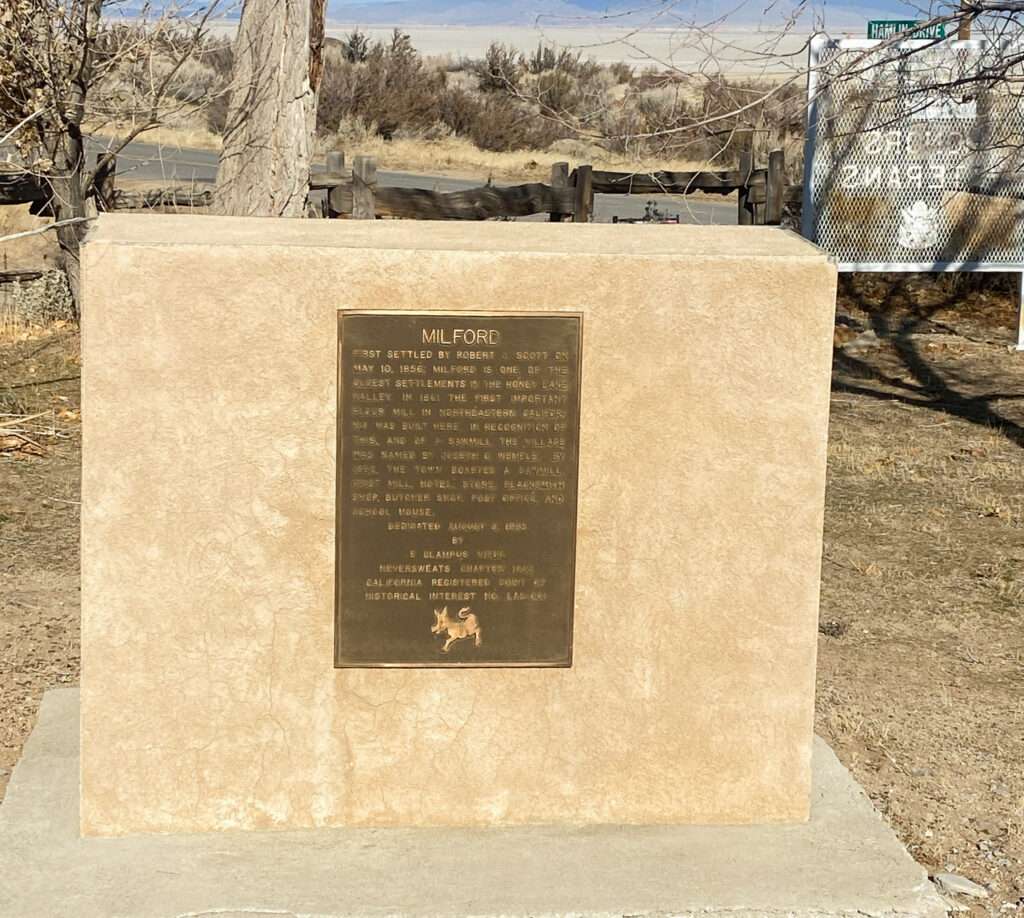
Milford was at risk from the Dixie Fire, but thankfully, firefighters saved the area.

Standish
Standish had a different beginning than many towns. Settlers based the town on philosophy, not mining, ranching, or transportation. In 1897, the town was the second settlement for the Associated Colonies of New York. The town was based on the ideas of Myles Standish and the economic plan of Brigham Young, the leader of the LDS church.

The plan was for residents to live in town but go into the fields to work during the day, similar to European towns. The new town recruited Honey Lake Colonial Club citizens to create the Standish Colony.
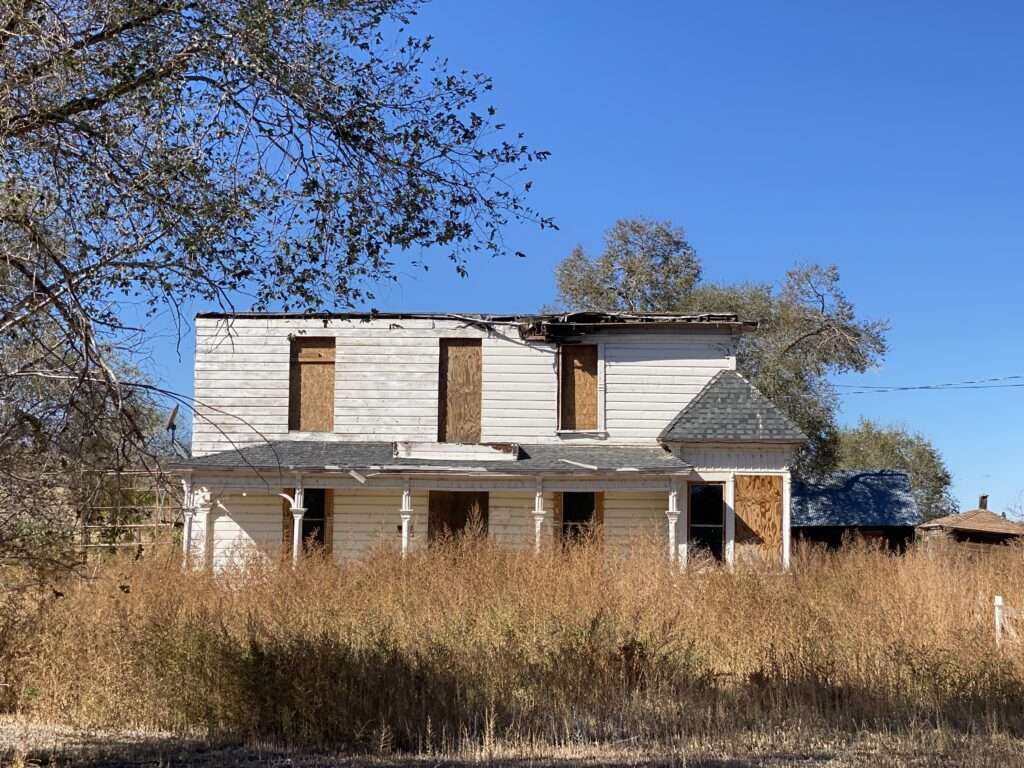
Legal battles with water rights inhibited the growth of the town but a post office was opened in 1899. Standish Hall was built in 1907. A store was on the ground floor and the upstairs was a meeting place for various social groups. The store, Neils Mercantile, remained open until into the 1980s, selling fresh-cut meat, groceries, hardware, and work clothing.
Litchfield
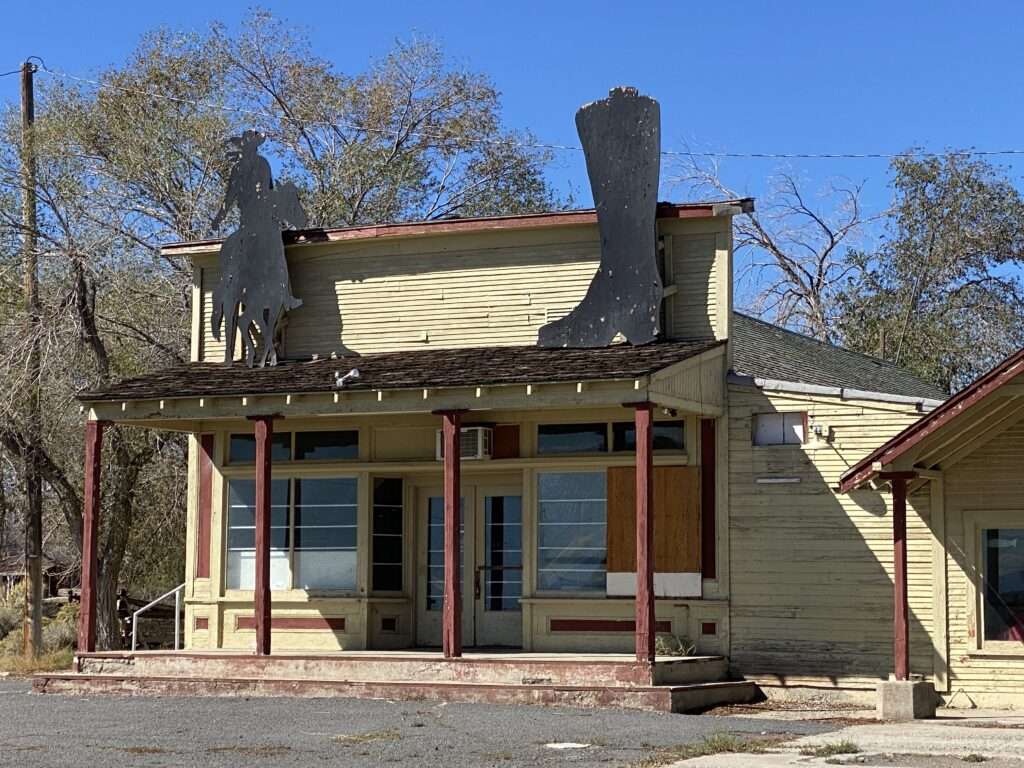
The town was founded in 1914, anticipating the arrival of the Fernley & Lassen Railway. The railroad reached Litchfield in 1913, but a station didn’t open until three years later. The town was a shipping hub until 1954, when the depot was closed.
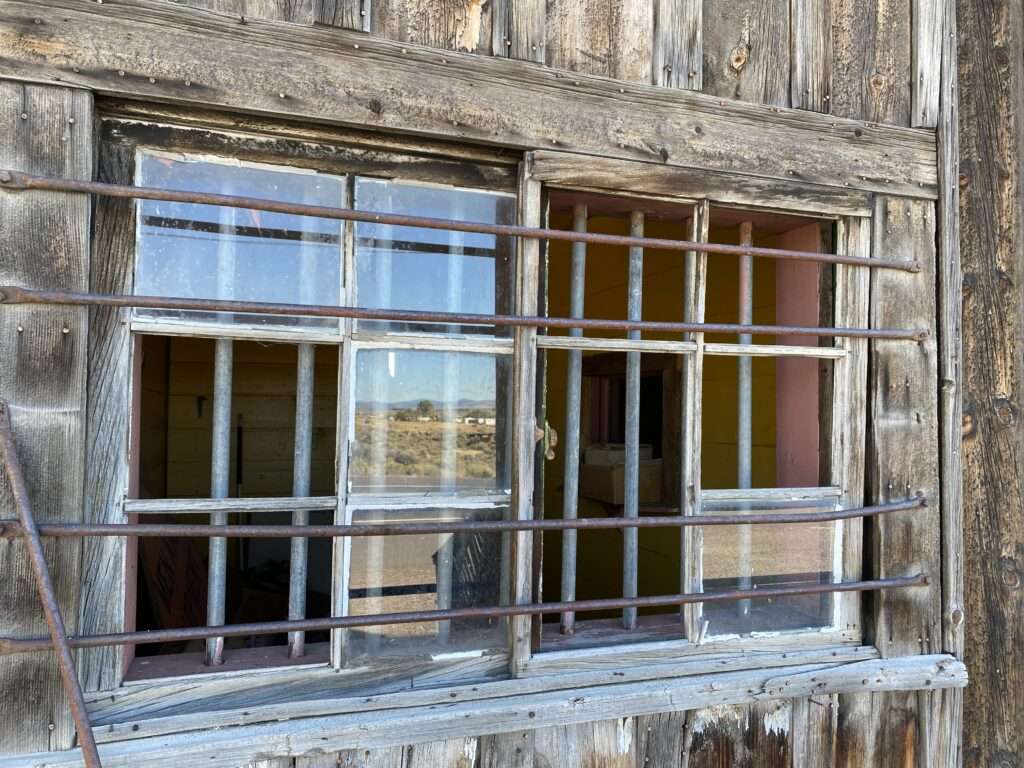
Heard’s Market began in 1948, selling groceries, ranch supplies and cowboy boots.
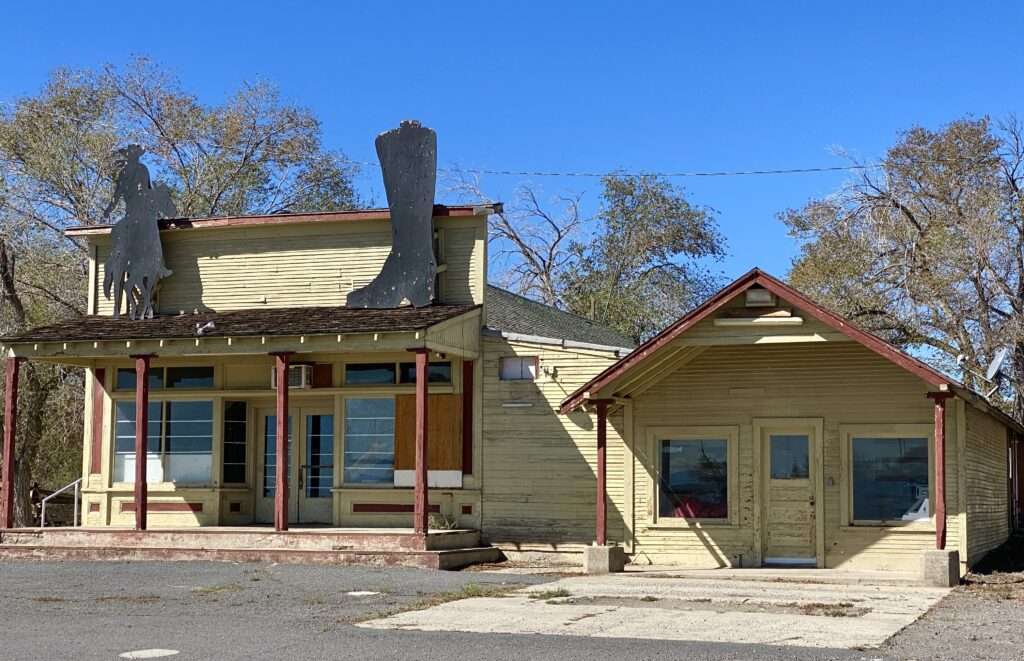
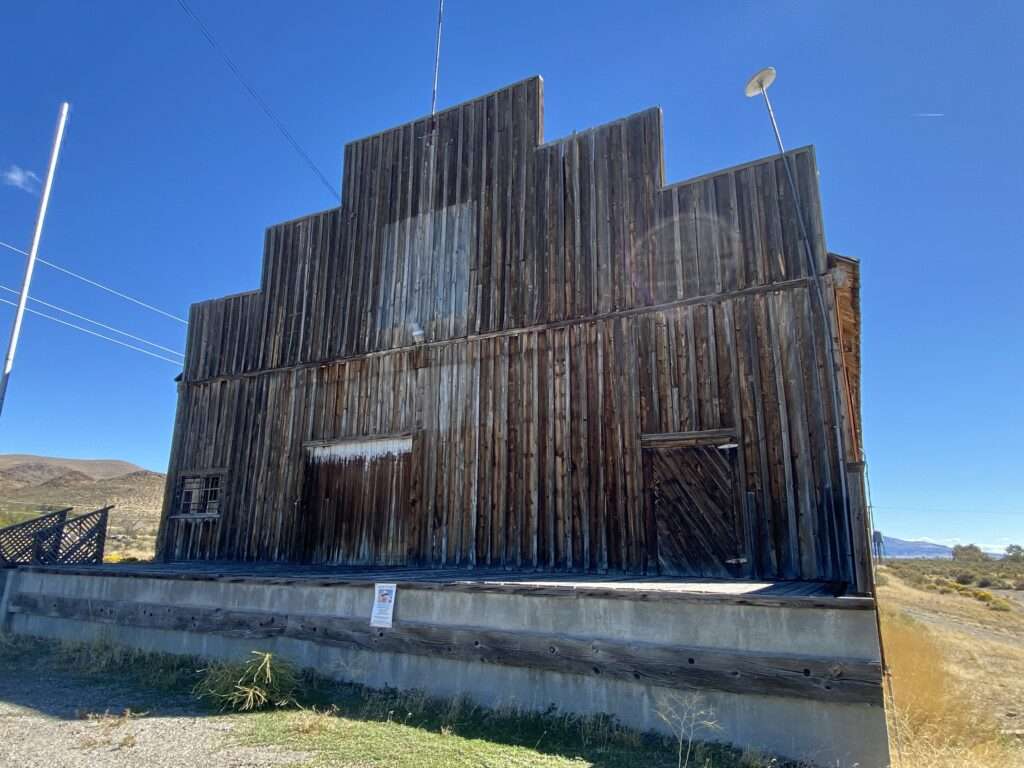
Dayton/Lathrop City

The small settlement started as a station on the Nobles Emigrant Trail by George Lathrop and Thomas Harvey. The partners sold the station in 1862 to The Shaffers and the name was changed from Lathrops to Shaffer’s Station. A townsite was platted in anticipation of the emigrants and the Transcontinental Railroad.
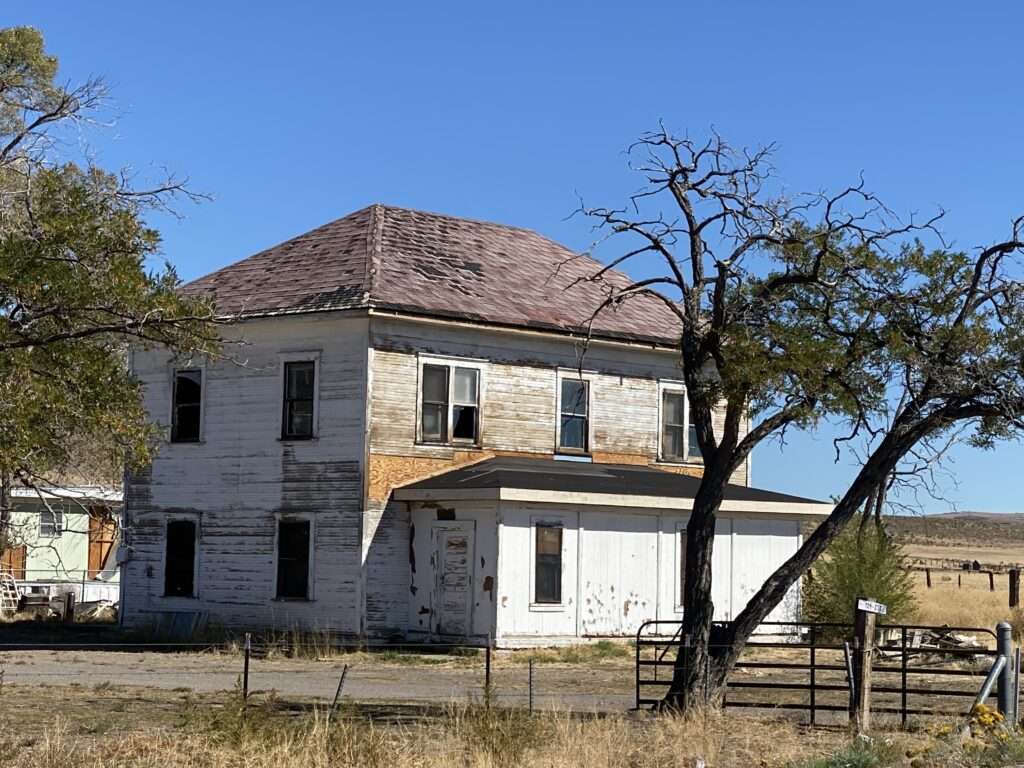
A post office opened in 1873 under the name Dayton. As the transcontinental railroad never arrived, the town faltered and the post office closed in 1875.
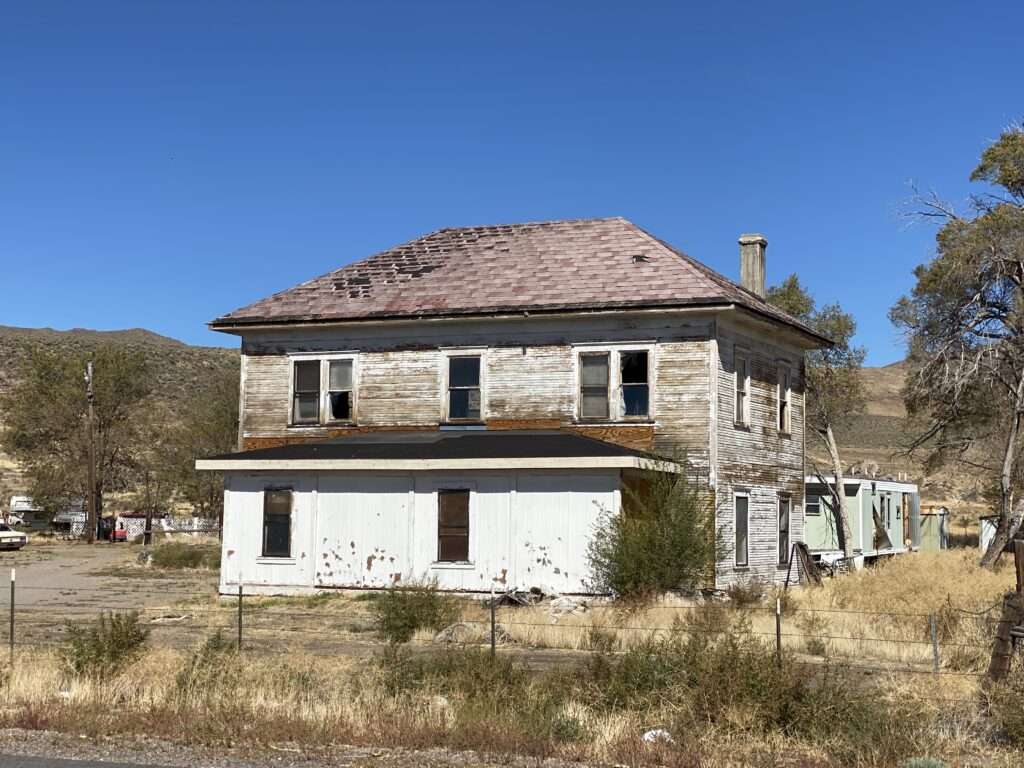
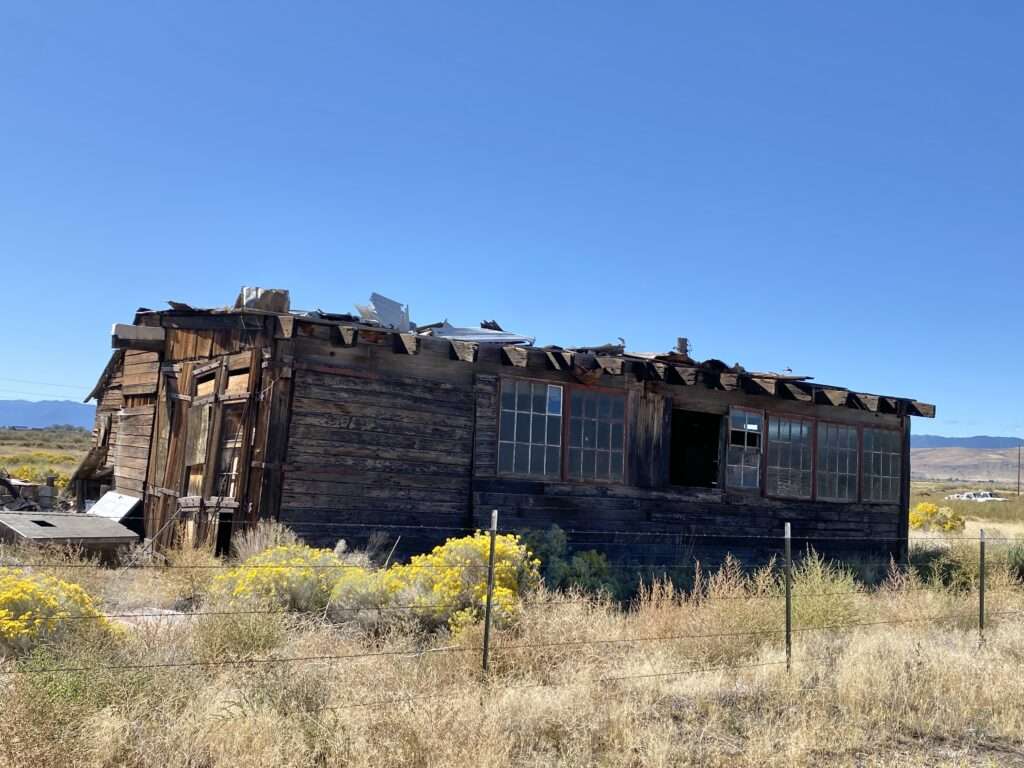
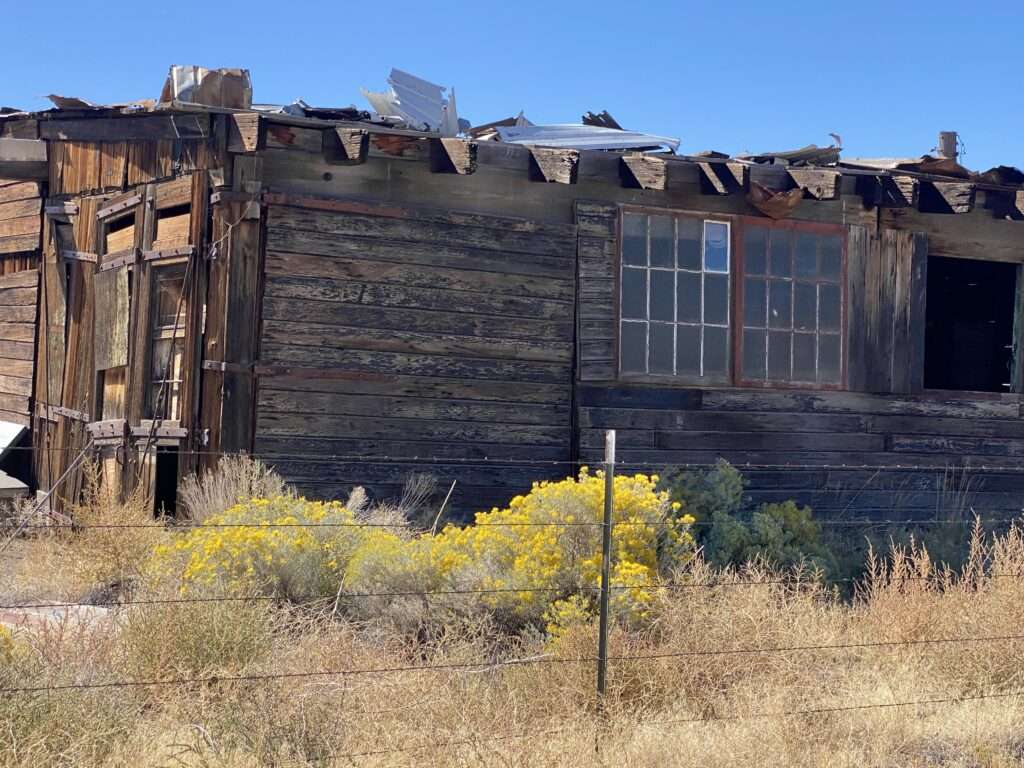
Wendel
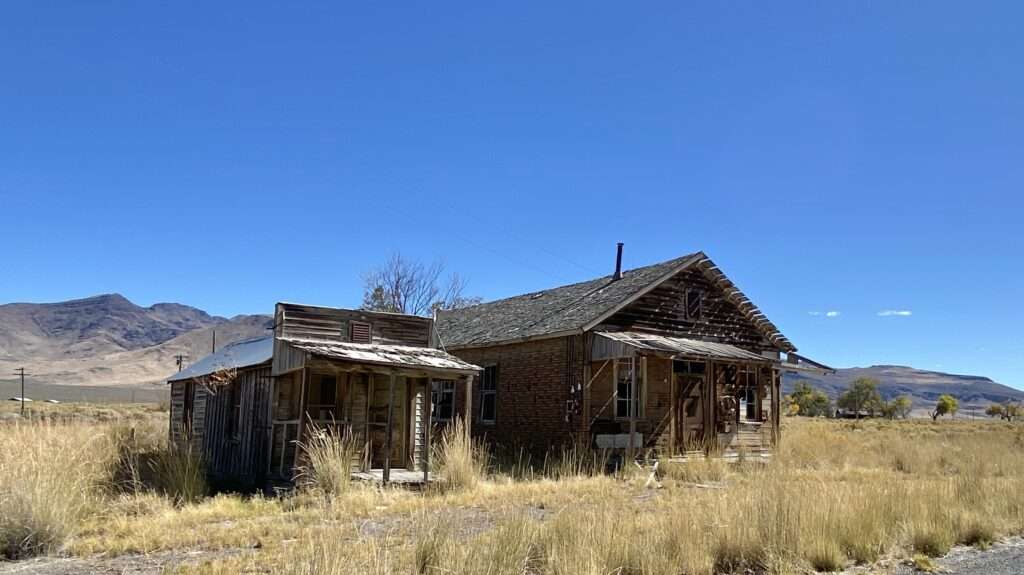
Wendel wasn’t a planned stop, but I noticed the water tower for a railroad and decided to detour. I’m so glad I did; it was one of my favorite stops.
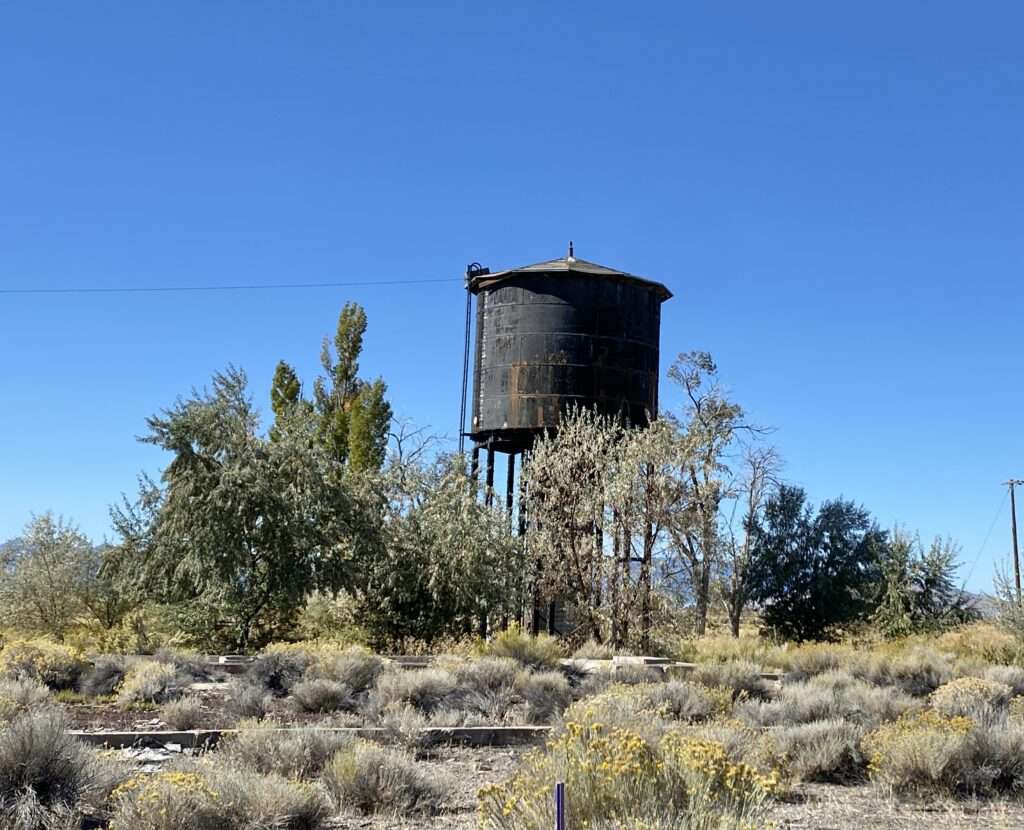
Wendel may have changed names more than any other town. In chronological order, the settlement went by Upper Hot Springs, Schaeffer Hot Springs, Smithon, Boyd, Hot Springs Station, Purser, Antola, Caloreta, and Wendel.

Just as the town of Wendel had many names, several towns had the name Wendel. Wendel in Lake County, Oregon, was a stop on the N.C.O. for a brief time. Both towns were named after the friend of Thomas Moran, the President of the N.C.O. I am guessing he was also a big investor to have two towns named in his honor.
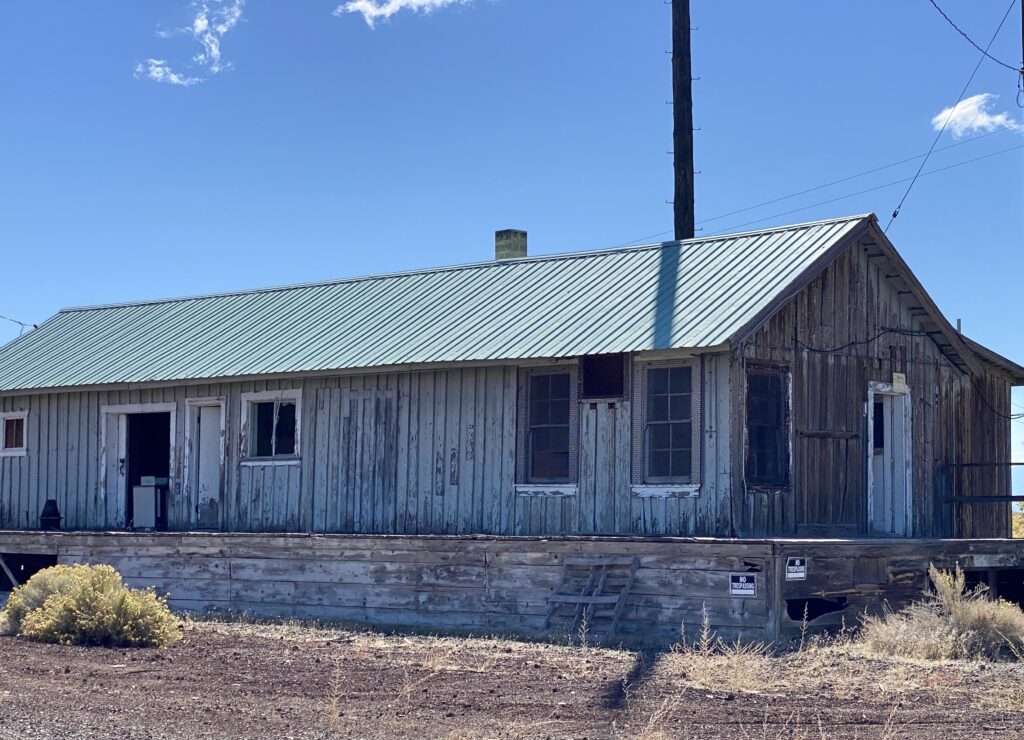
Wendel was an important station. It was the junction of the Susanville branch and where crews changed. The town had an engine house, a water tower, and a powerhouse.

The post office closed on December 3, 1993, and the rails were removed except where they were embedded in the road.
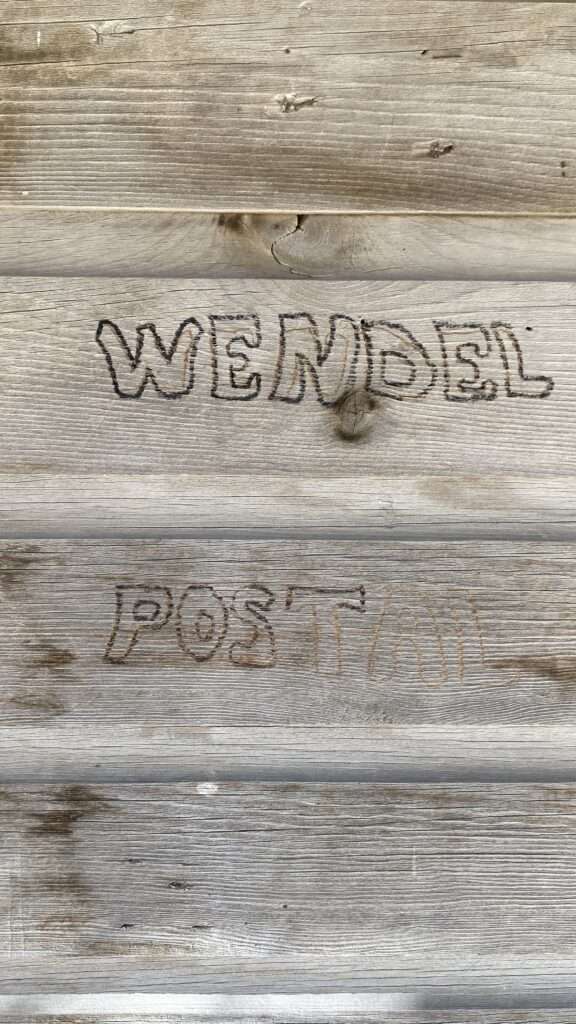
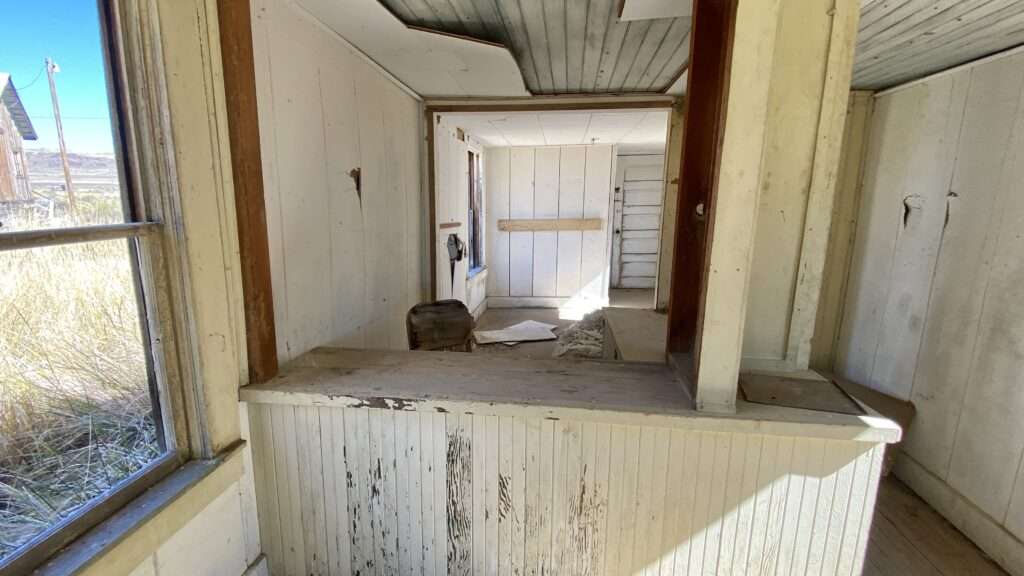

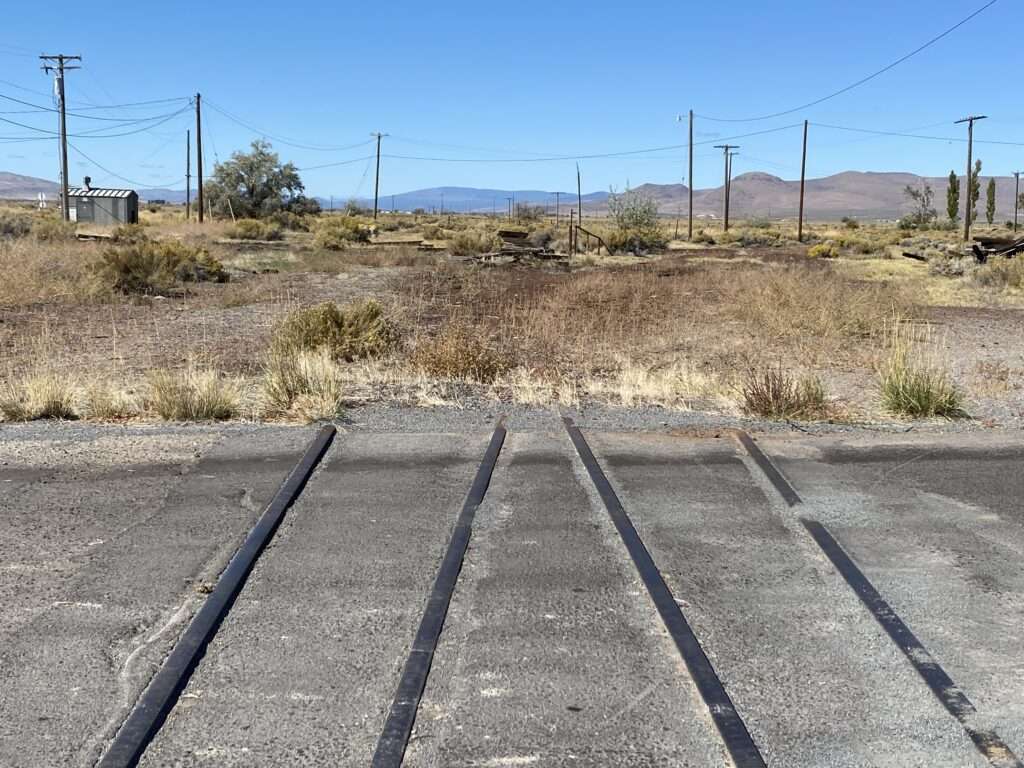
Following the road to Wendel, I found one of the creepier places I have visited. It looked like an episode of Hoarders: Ghost Town Edition. It was unsettling driving through this area. I could hear a dog in the distance, so people were around. The debris covered the road. I took a picture from the Jeep and moved on.
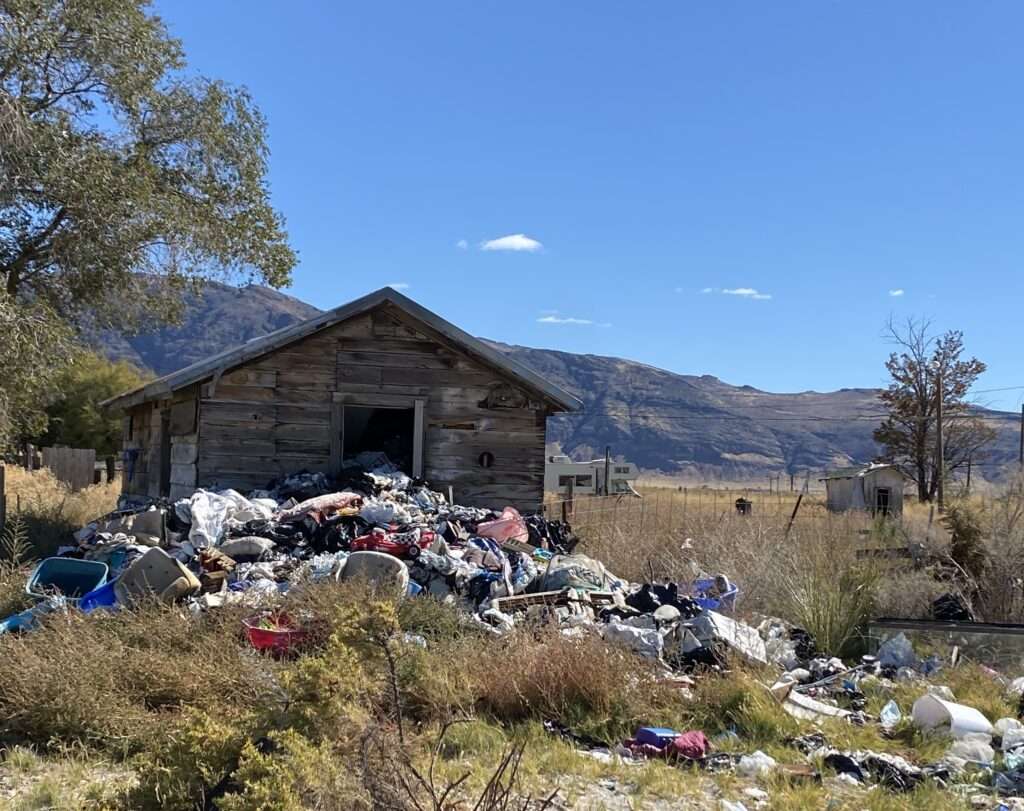
Amedee ghost town & kiln
My big planned stop of the trip was the Amedee lime kiln. Until I started research, I didn’t realize Amedee was also a significant town in Lassen County.
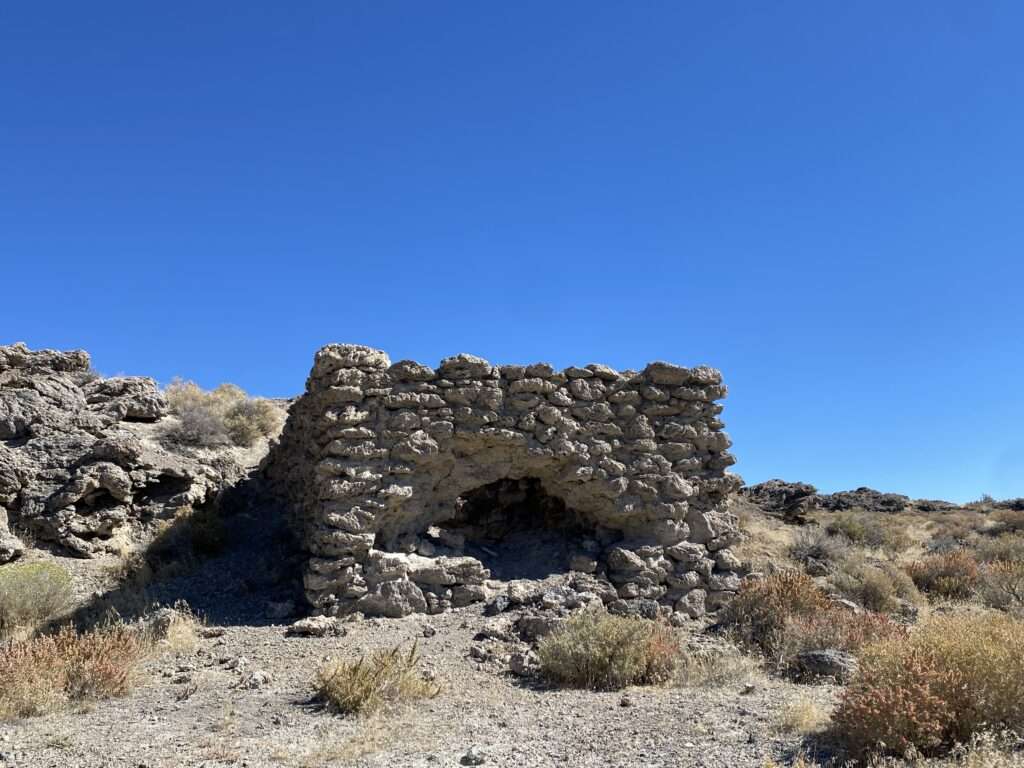
Amedee was named after Amedee Depau Moran, one of the owners of the N.C.O. It served as a terminal for the N.C.O. While nothing marks the town now, it once competed with Susanville. Amendee was considered as the county seat following a disastrous fire in Susanville in 1893. Between the 1890s and early 1900s, it was a main shipping center for ranchers and dairymen with the railroad and steamboat across Honey Lake.
A post office operated from 1890 to 1924.

(Photo credit: UC Davis Library)
Amedee was also a destination town with hot springs, saloons gambling and outdoor recreation, including paddle boats on Honey Lake. Moving the termilas to Wendel led to the downfall of Amedee. In 1950, Jack and Margaret Humphrey purchased the entire town fo $32.15. They were the only bid in a tax sale.
Amedee Kiln
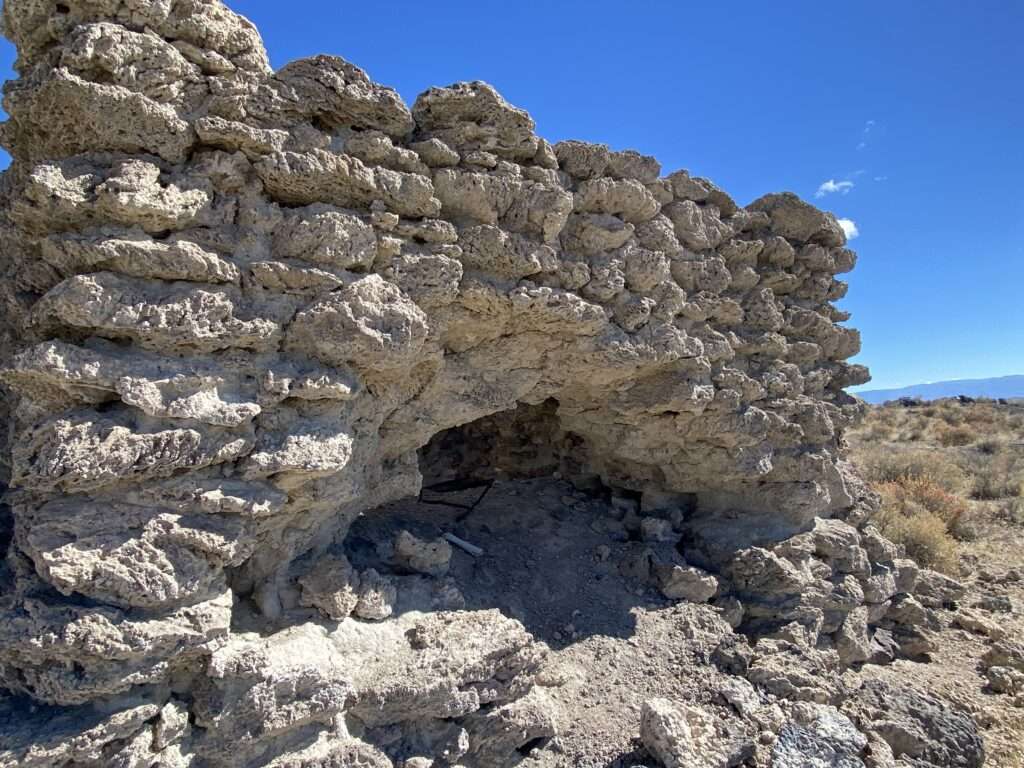
Lime is extracted from stones such as limestone and travertine. The ore must be baked in a kiln to extract the lime.
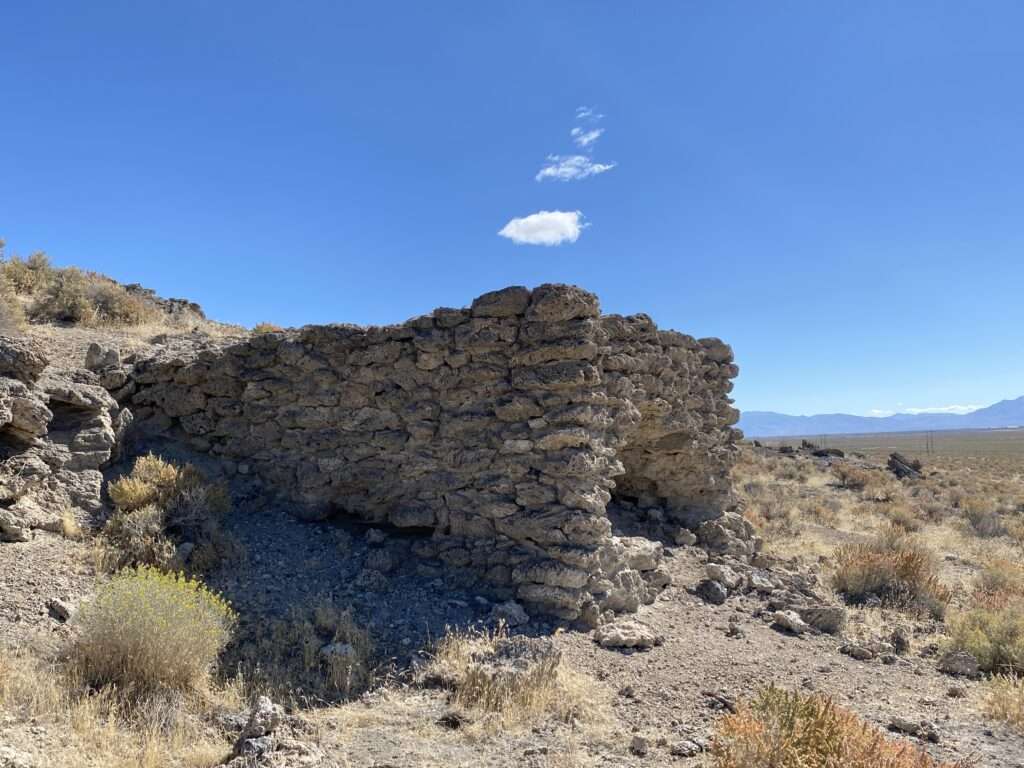
In the early 1890s, the Amedee Lime Works shipped limestone to Reno for processing. In 1893, Charley Falding constructed a stone kiln and Amedee to process the lime on site. The area was worked into the 1920s but despite the high quality of stone, the remotes and shipping doomed the Amedee Kiln.
Lunchtime
Choices, choices. Stop in Alturas at a restaurant, or lunch on Honey Badger’s hood at the lime kiln. The kiln won, hands down; I’ll take a historical site and a meal on HB any day.

The Churchill County Museum gave me the sweetest basket after my presentation the night before my trip. It was overflowing with Fallon goodies. I thought of pulling out my prepackaged salami and cheese boxes but looked over and saw the basket.
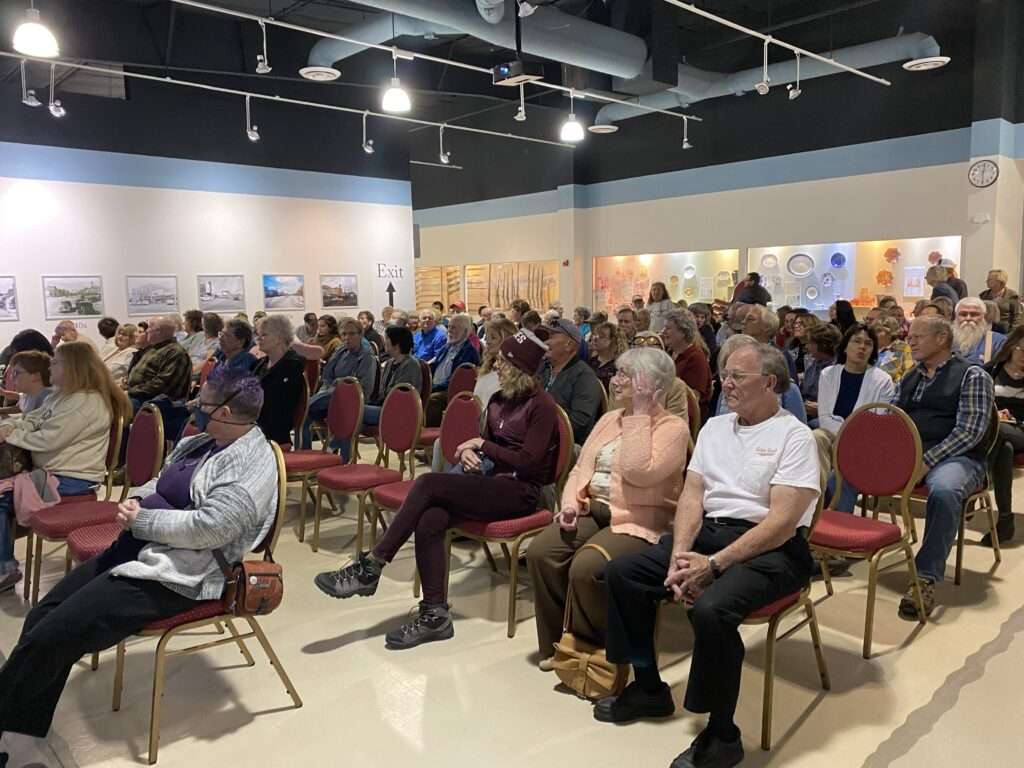
I took a picture of the presentation to show the kids that someone wanted to listen to me talk about history. ![]()
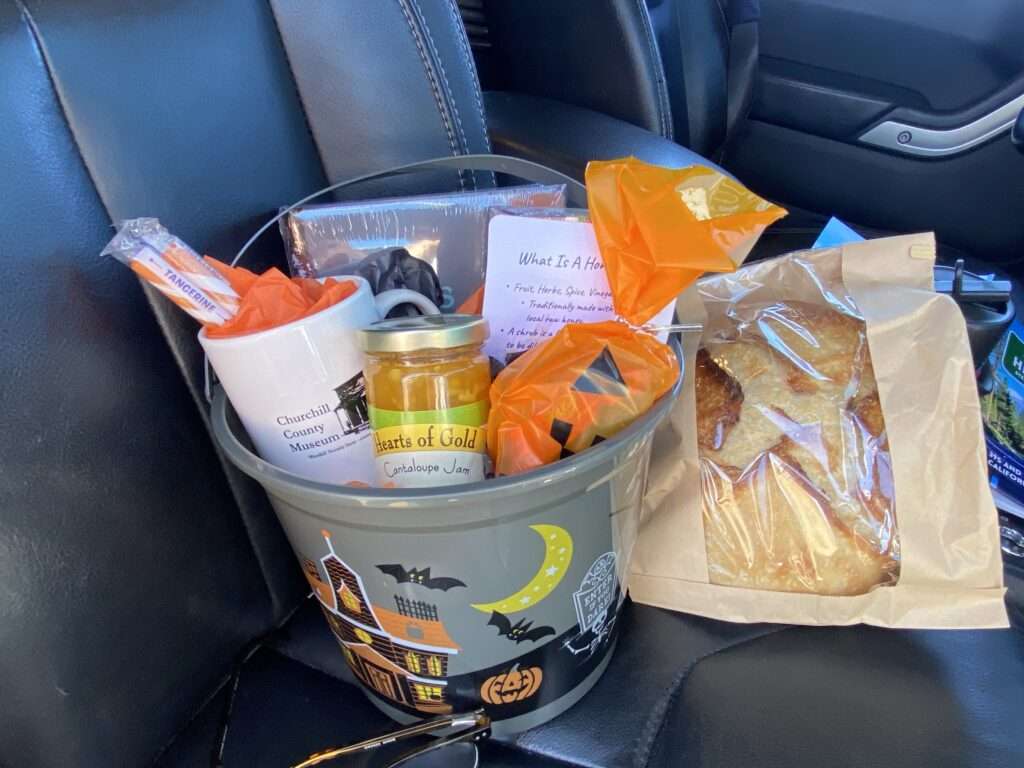
Lunch was Battle Born Bread and Hearts of Gold cantaloupe jam. The loaf was crispy on the outside, moist and tender inside. Cantaloupe seems like an odd jelly base, but it works. Lattin Farms knocked this one out of the park. It reminds me of a peach jelly, not too sweet but a hint of melon.
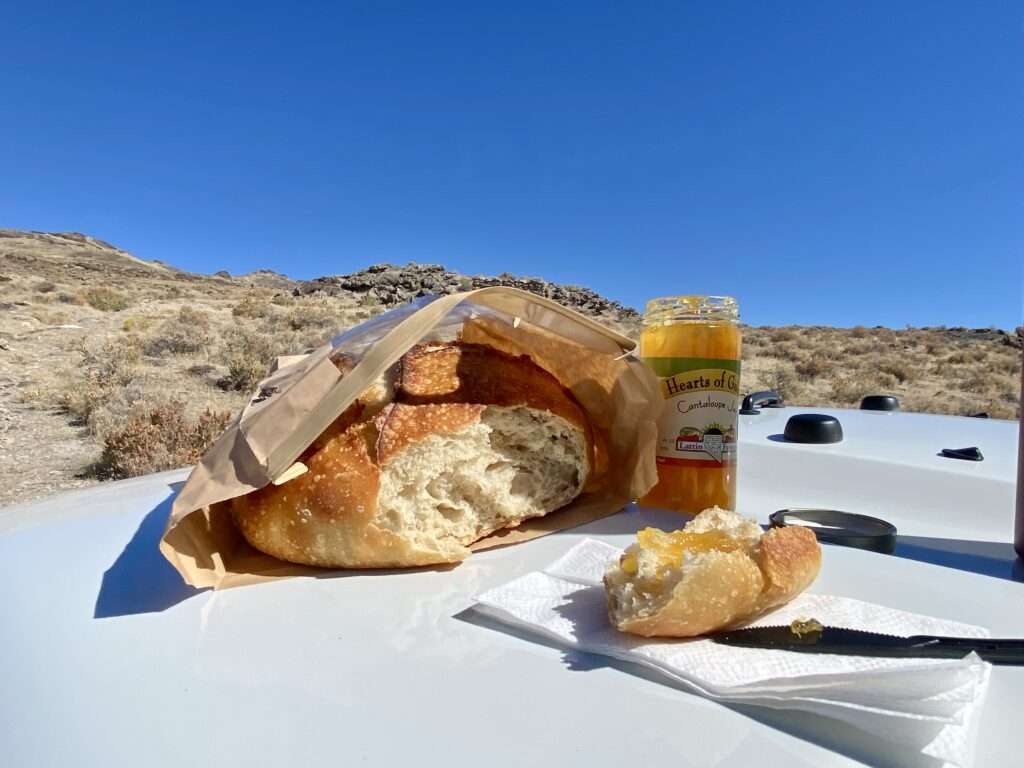
Ravendale
I find Ravendale creepy… like the Hills Have Eyes. Maybe this is because the main building in town is a church based in an old motor inn.
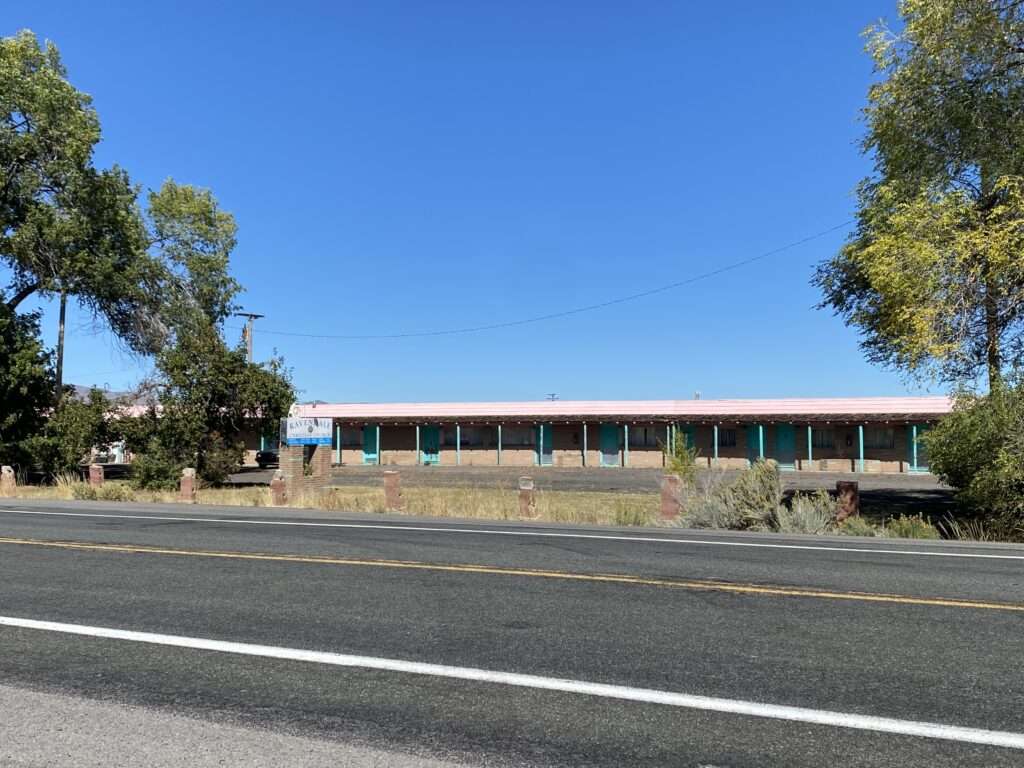
Student attendance at Ravendale Elementary declined to no students in 1939. The school trustees questioned if they needed to continue paying the teacher’s salary; the California Attorney General decided the issue, and yes, they had to pay the teacher.
Ravendale was a station on the N.C.O. It had a post office from 1910 to 1920. And again in 1921. The town was named after the significant number of ravens in the area, adding to the unsettling feeling.

The Ravendale motel operated in the 1950s. The Ravendale Christian Church now resides in the old hotel rooms. It is not a welcoming church with offers to join the Sunday service.
Termo
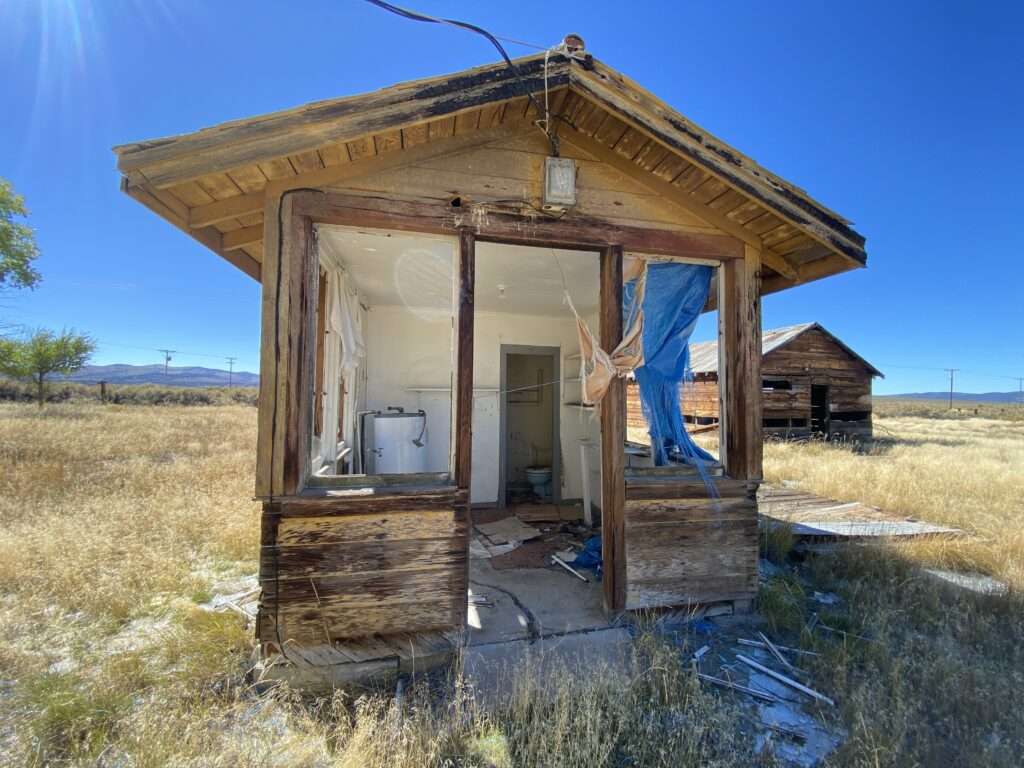
Termo was the terminus of the N.C.O. in 1900, thus the unusual name. A post office was opened in 1908. Once the N.C.O line extended to Madeline, then Lakeview, Termo became a ghost town.
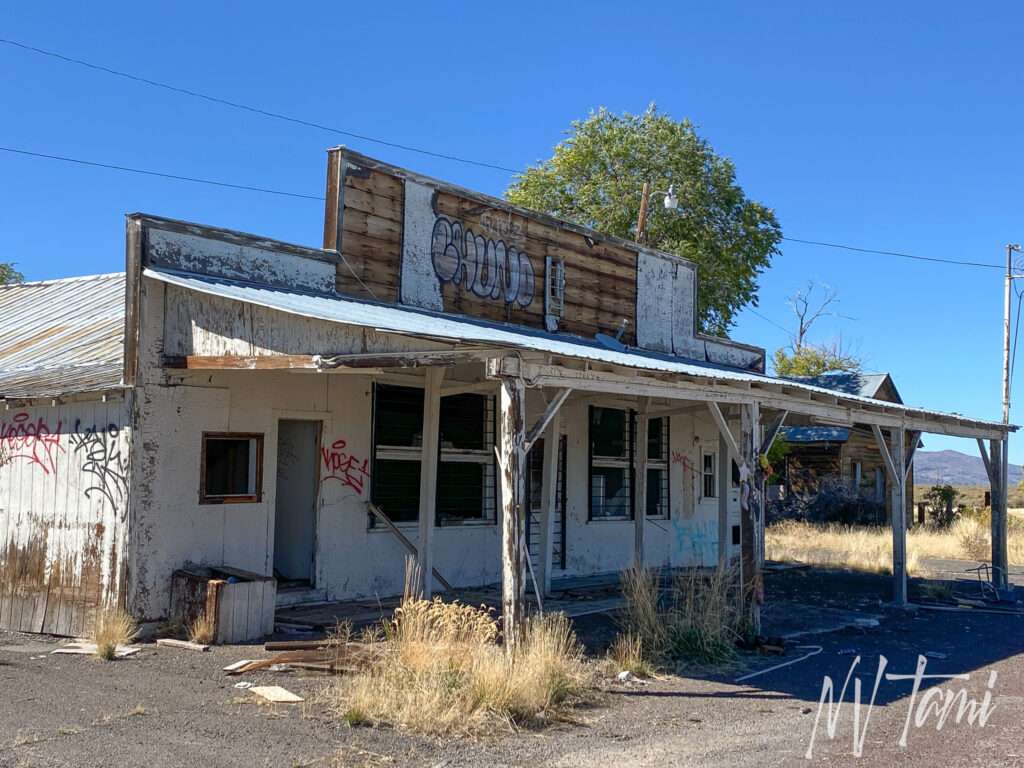
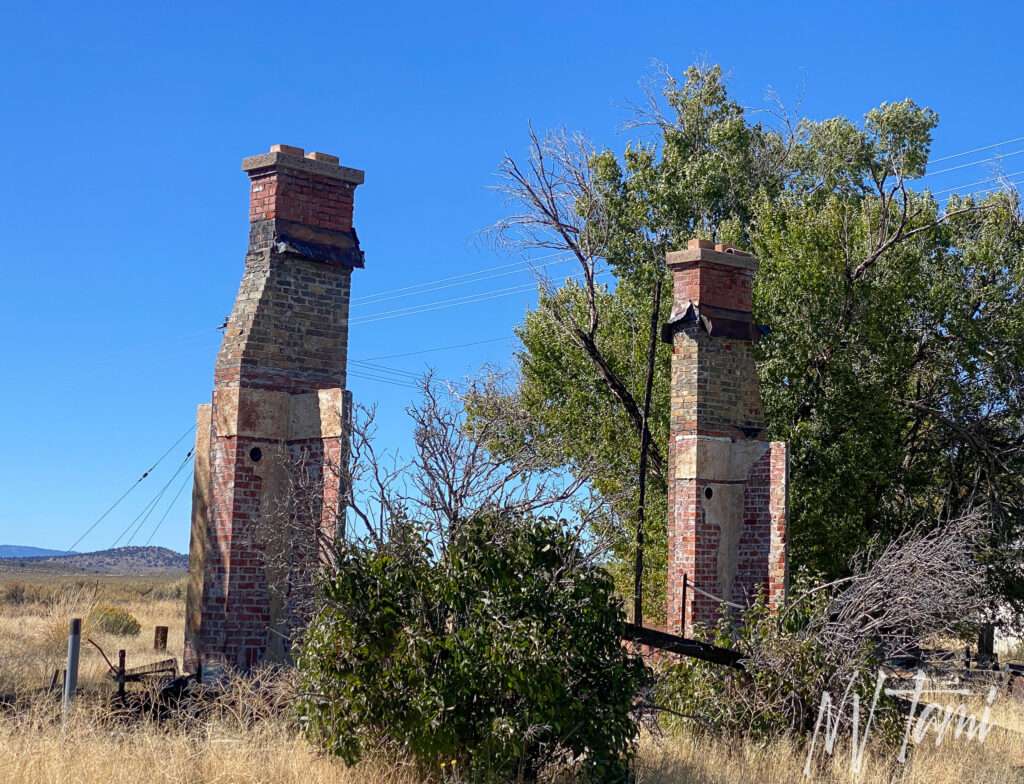

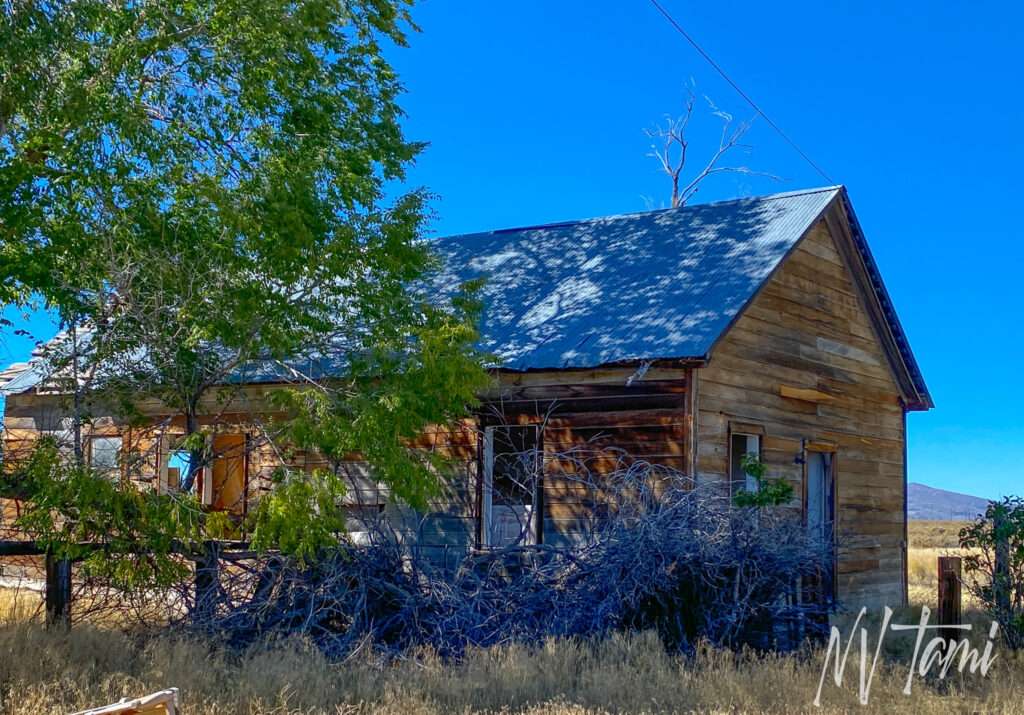
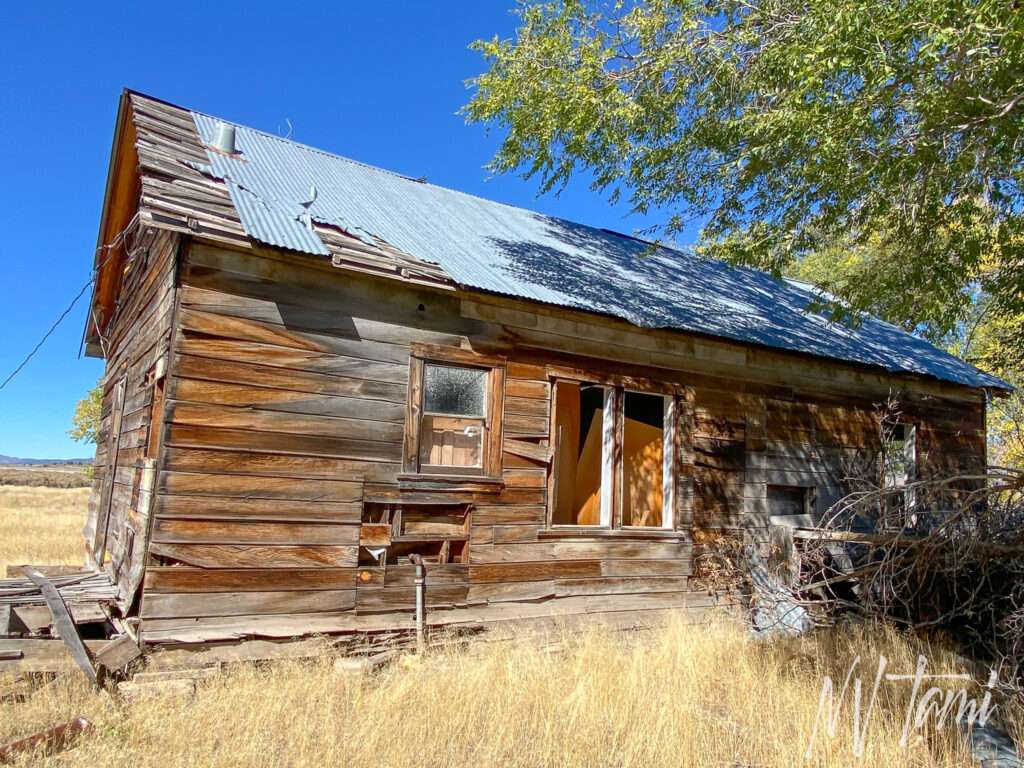
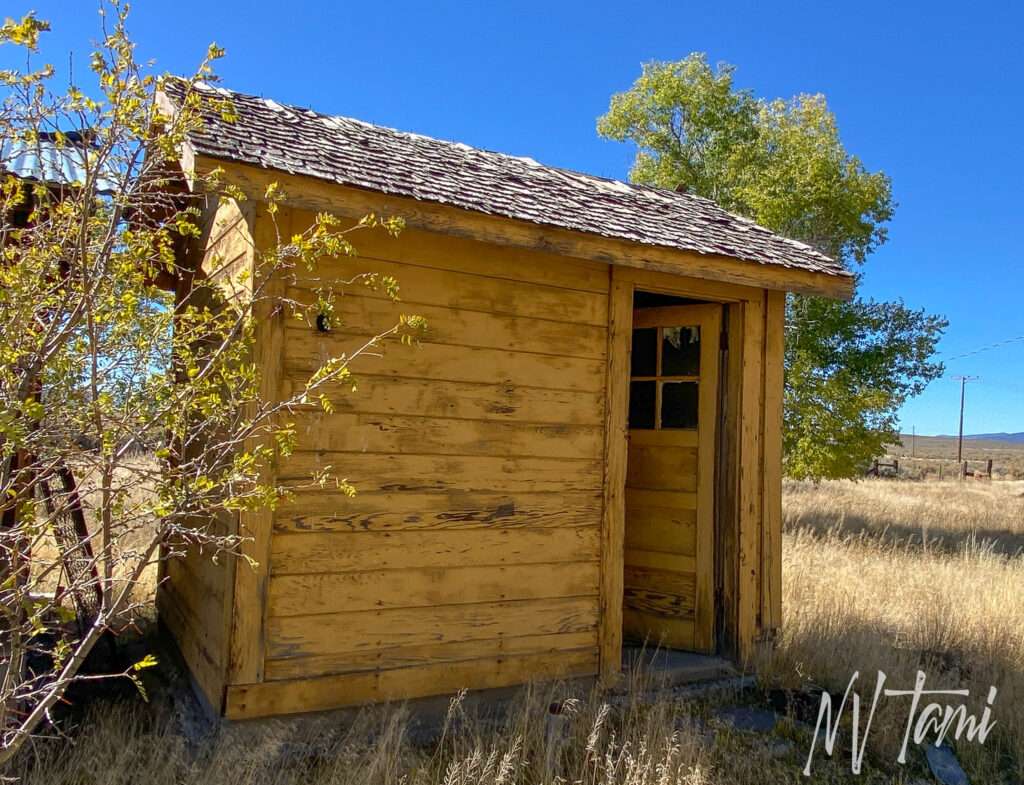
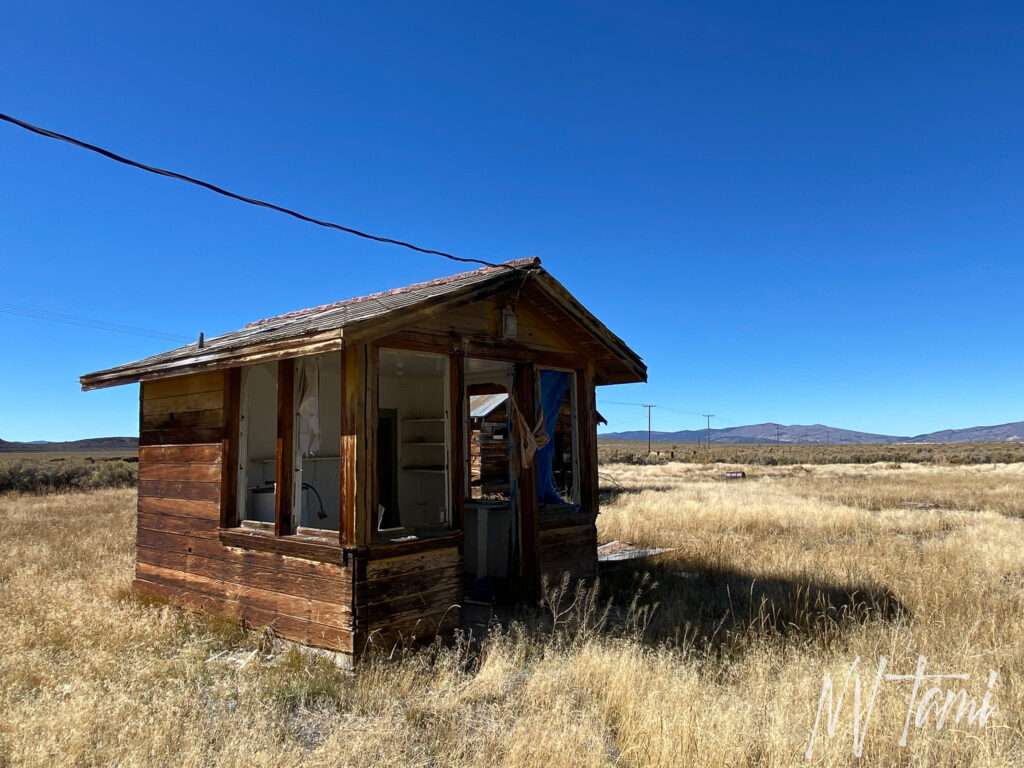
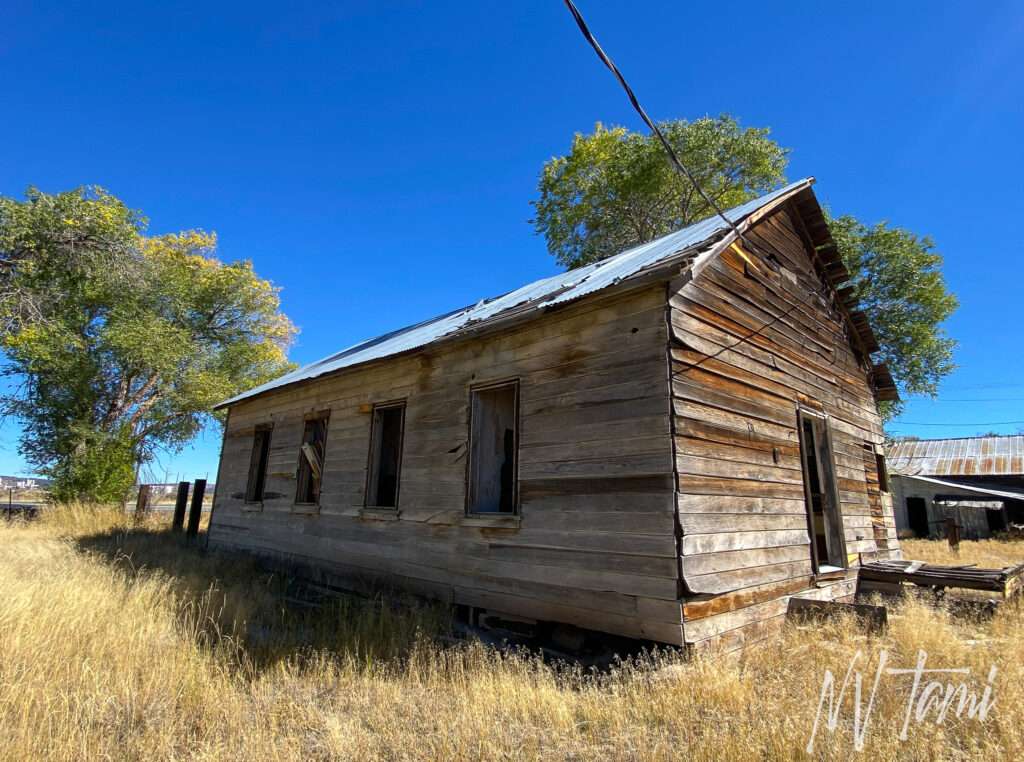
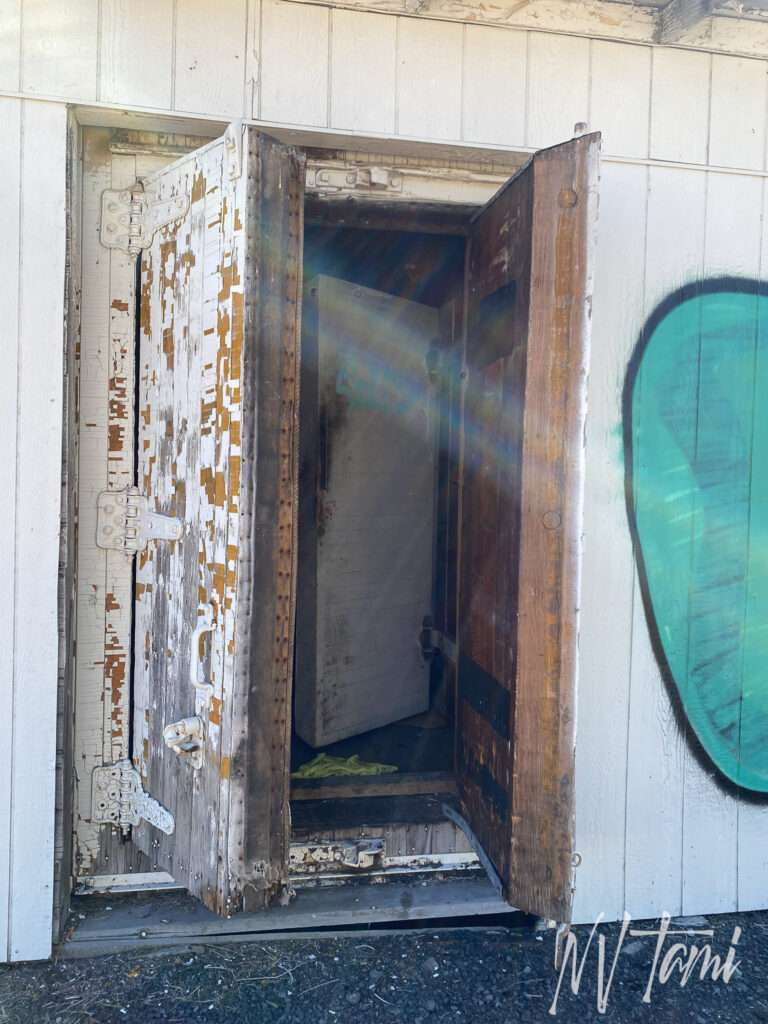
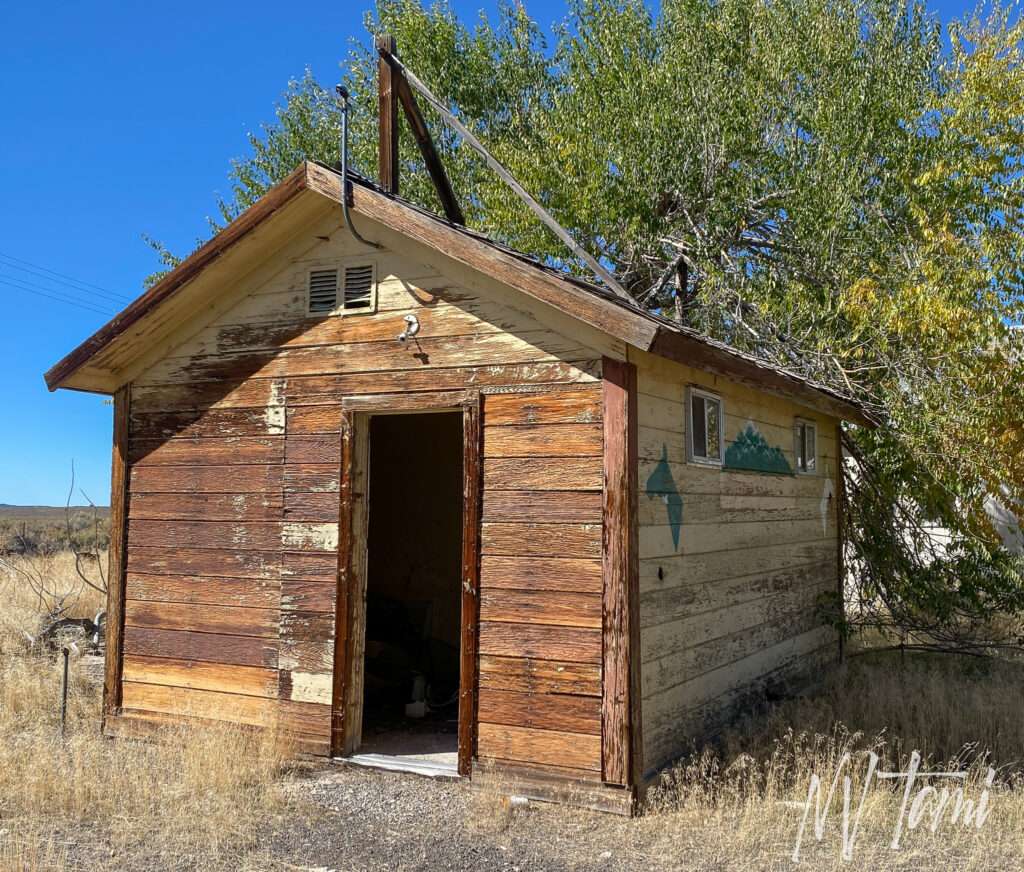
Madeline
Madeline was a stop on the N.C.O. Later, the line was taken over by the Southern Pacific Railroad. The stop was active as a livestock shipping center.
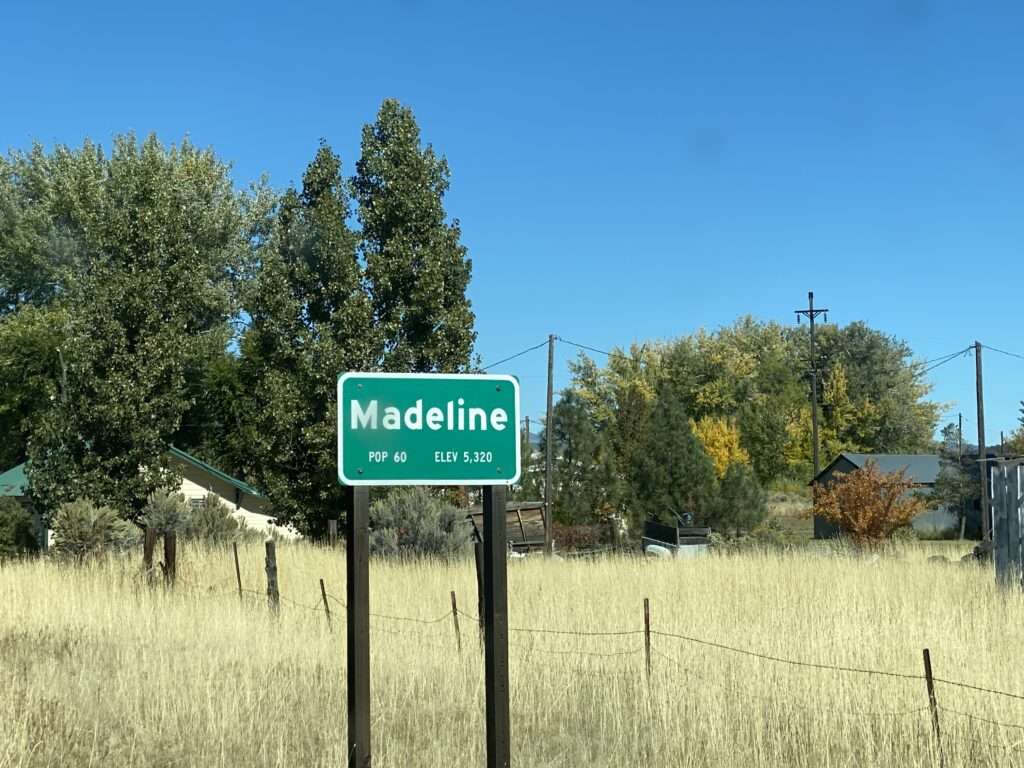
Madeline Meadows, Land & Irrigation Company, tried to develop the town—the advertised pictures of the town depicted orange trees growing along the irrigation ditches. Having lived not too far from Madeline, I think they did some creative photo editing because citrus trees would never survive the winters.

A post office opened and closed multiple times, 1875 to 1878, 1879 to 1882, and 1187 and 1902.
Lakeview N.C.O. Terminal
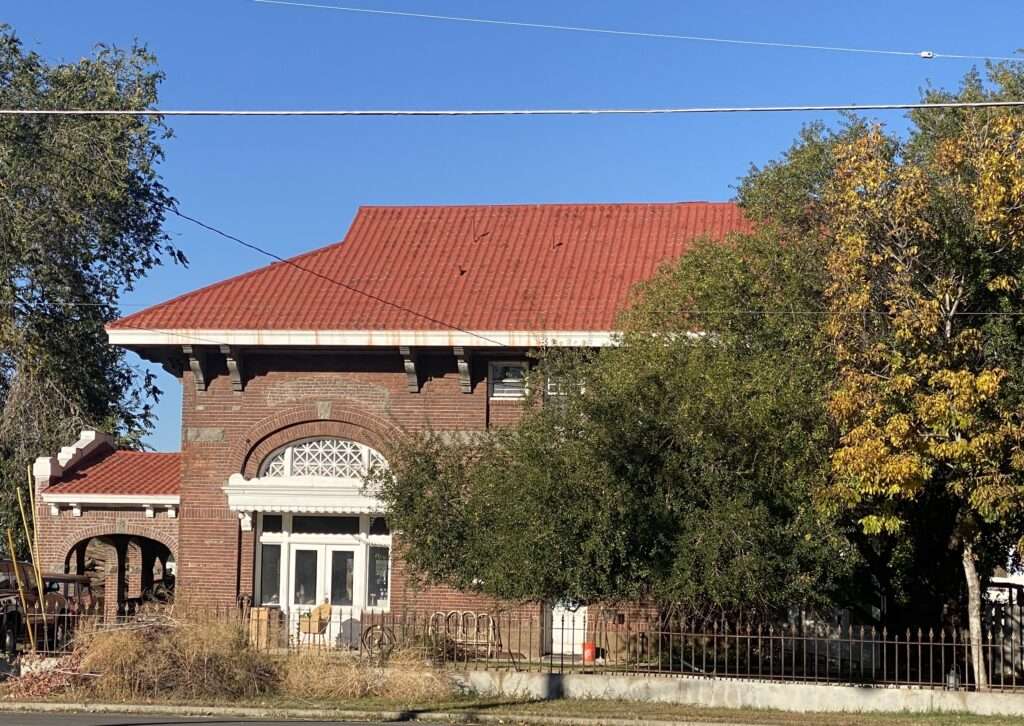
The N.C.O. used the Lakeview terminal for passengers and freight. It was purchased in the 1920s by the Southern Pacific Railroad. In 1982, private owners purchased the property.
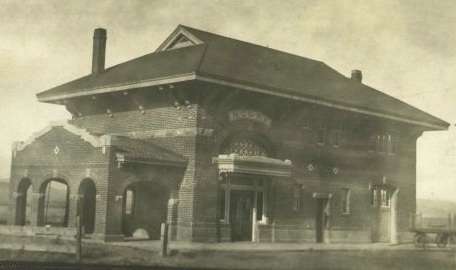

(Photo credit: Wikipedia)
Davis Creek
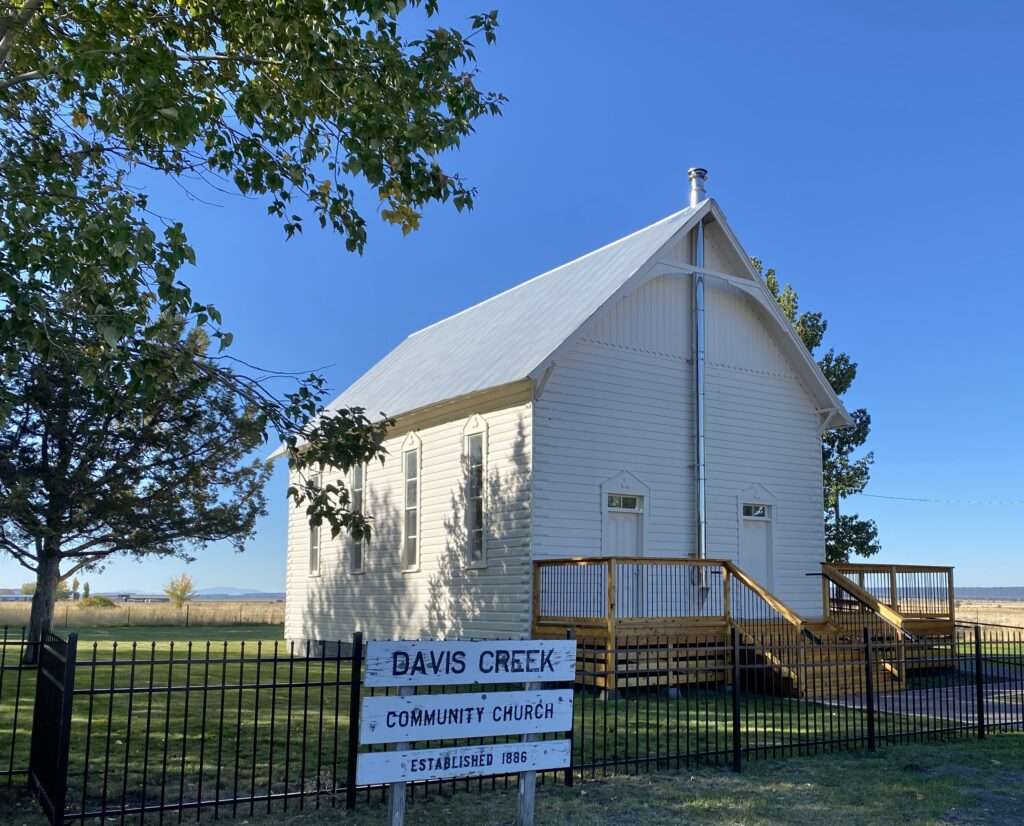
A log cabin began Davis Creek in 1869, and the first post office opened ten years later. At one time, the town sat on the southern edge of Goose Lake. A ferry transported cargo and passengers to Lakeview, Oregon at the north end of the lake.
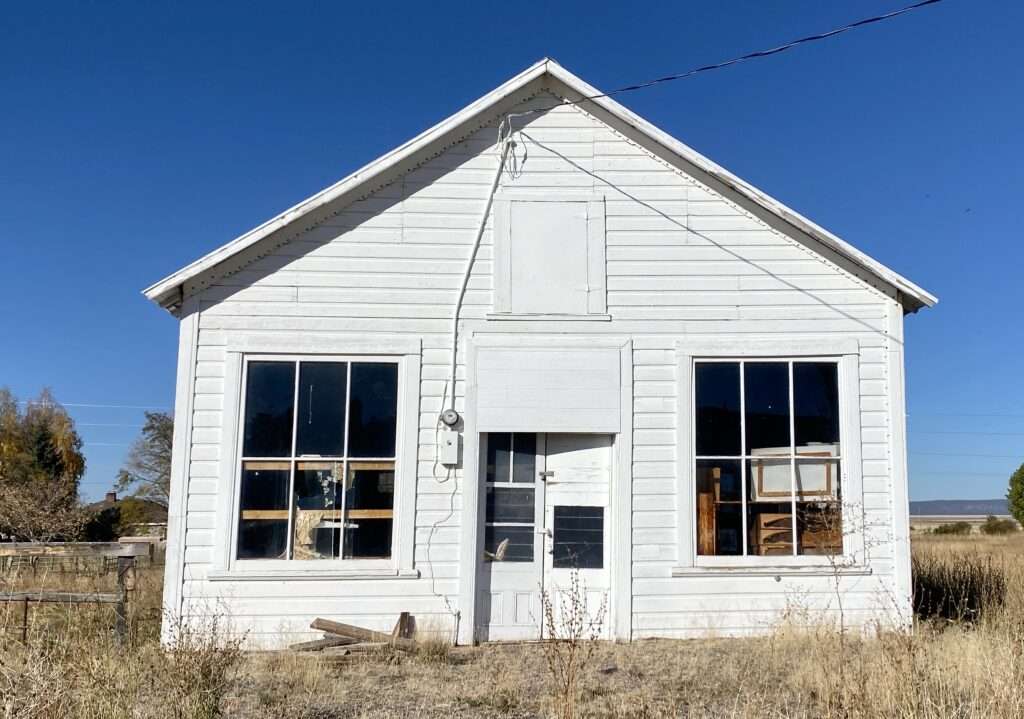
The N.C.O. arrived at Davis Creek in 1911, and the ferry was discontinued.
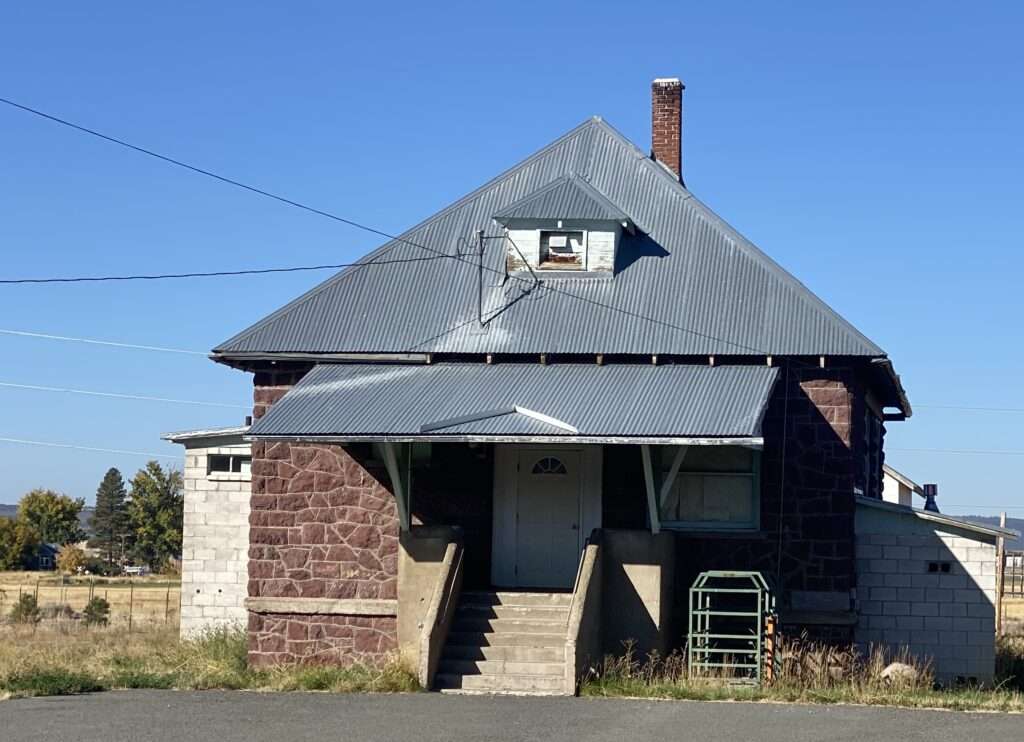
The realignment of Highway 395 in the early 1960s bypassed the business section of town.
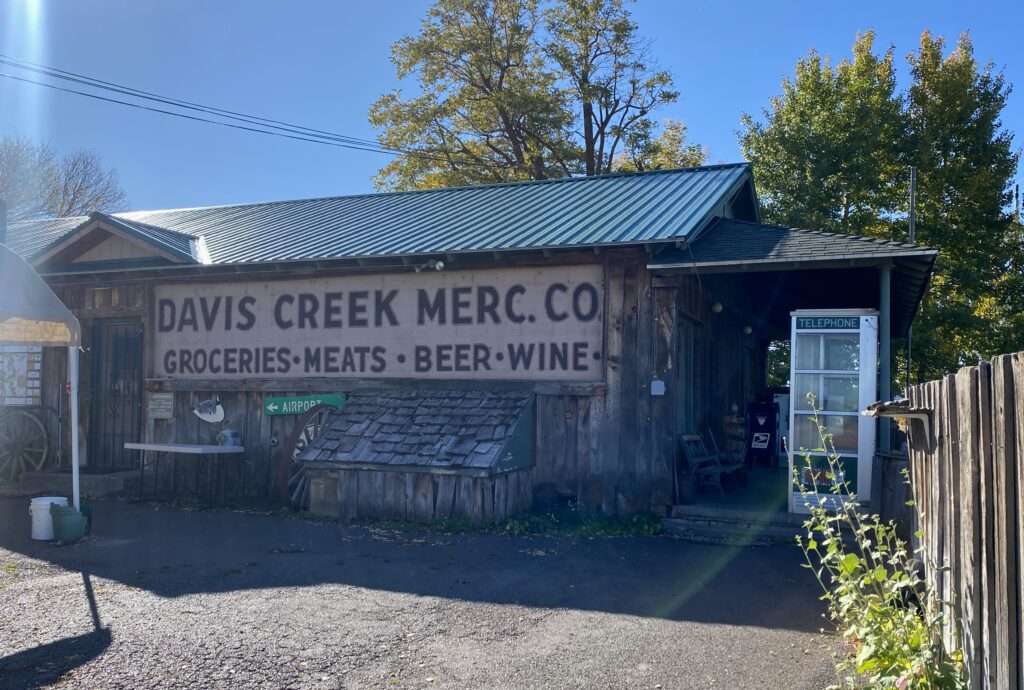
Chimney Rock
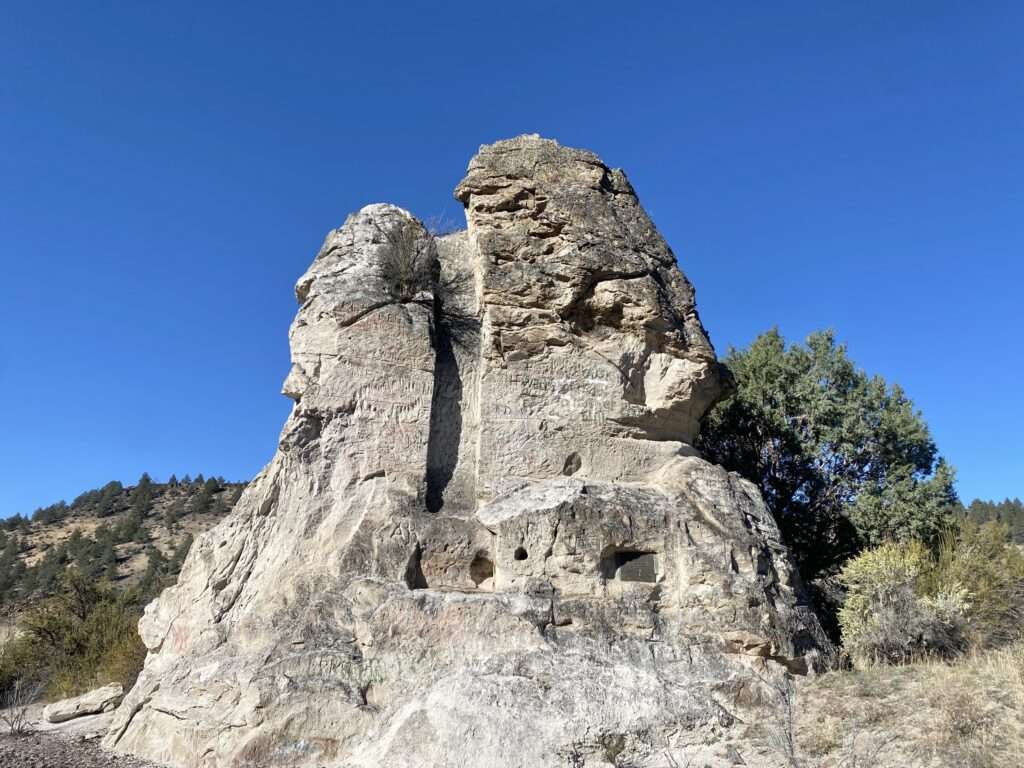
Thomas Denson was one of the first non-native settlers in the Pit River Valley. A master craftsman, he built a log cabin around a sandstone pyramid. He carved a chimney into the rock. His cabin was completed in 1871 and was the second building in the Pit River Valley.
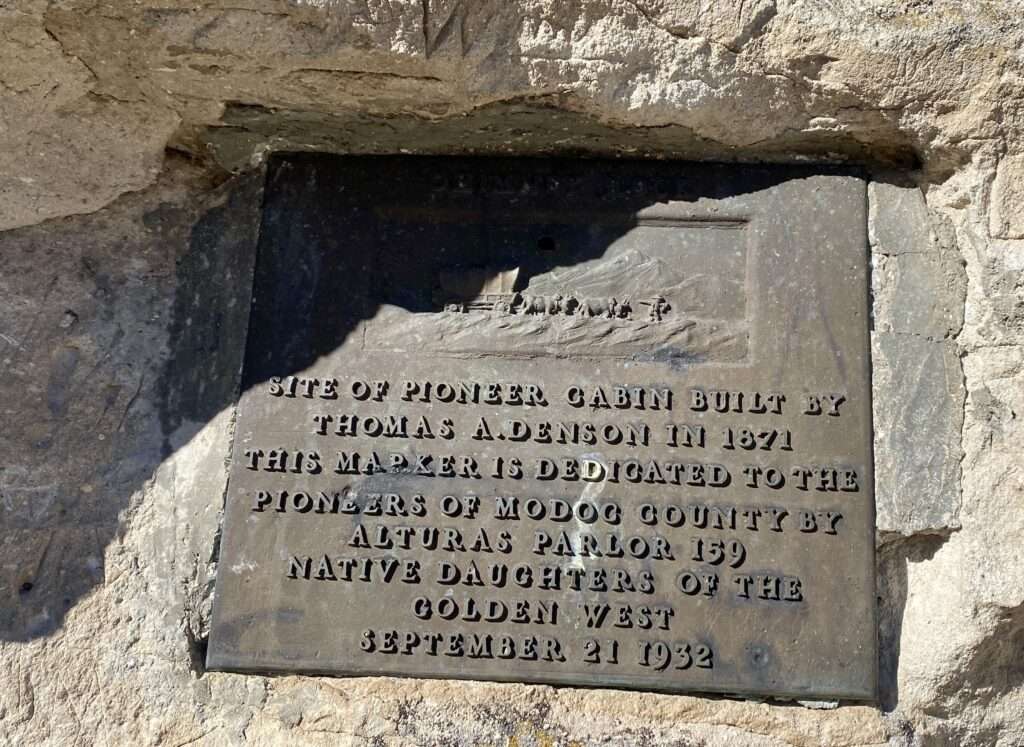
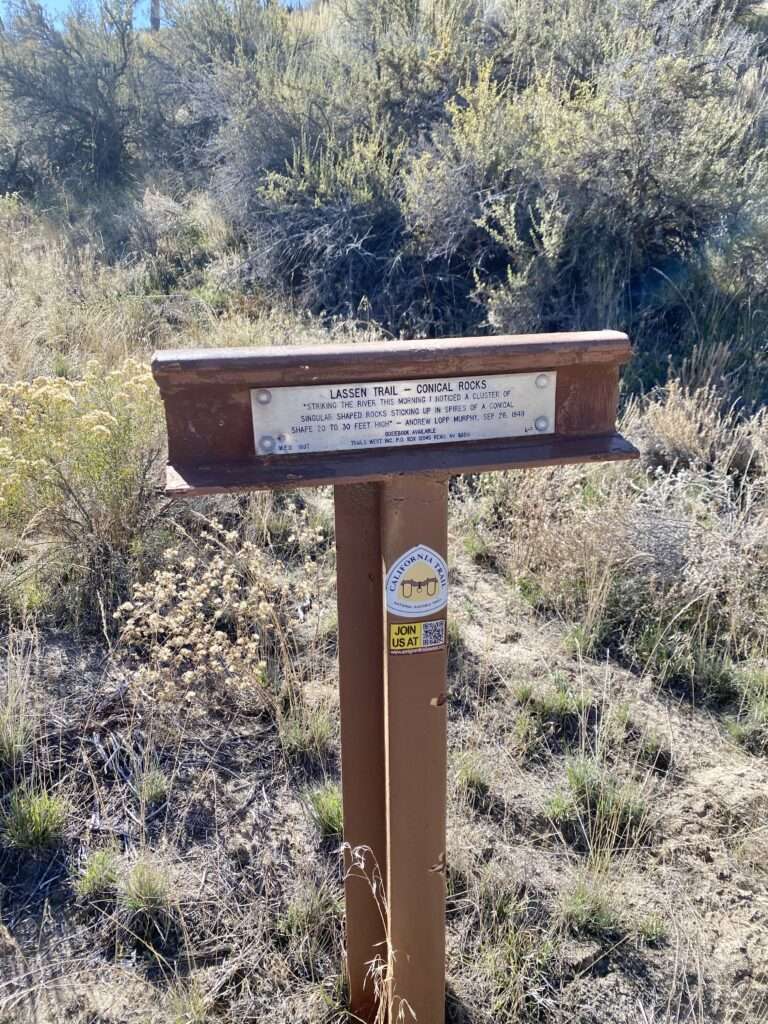
Alturas
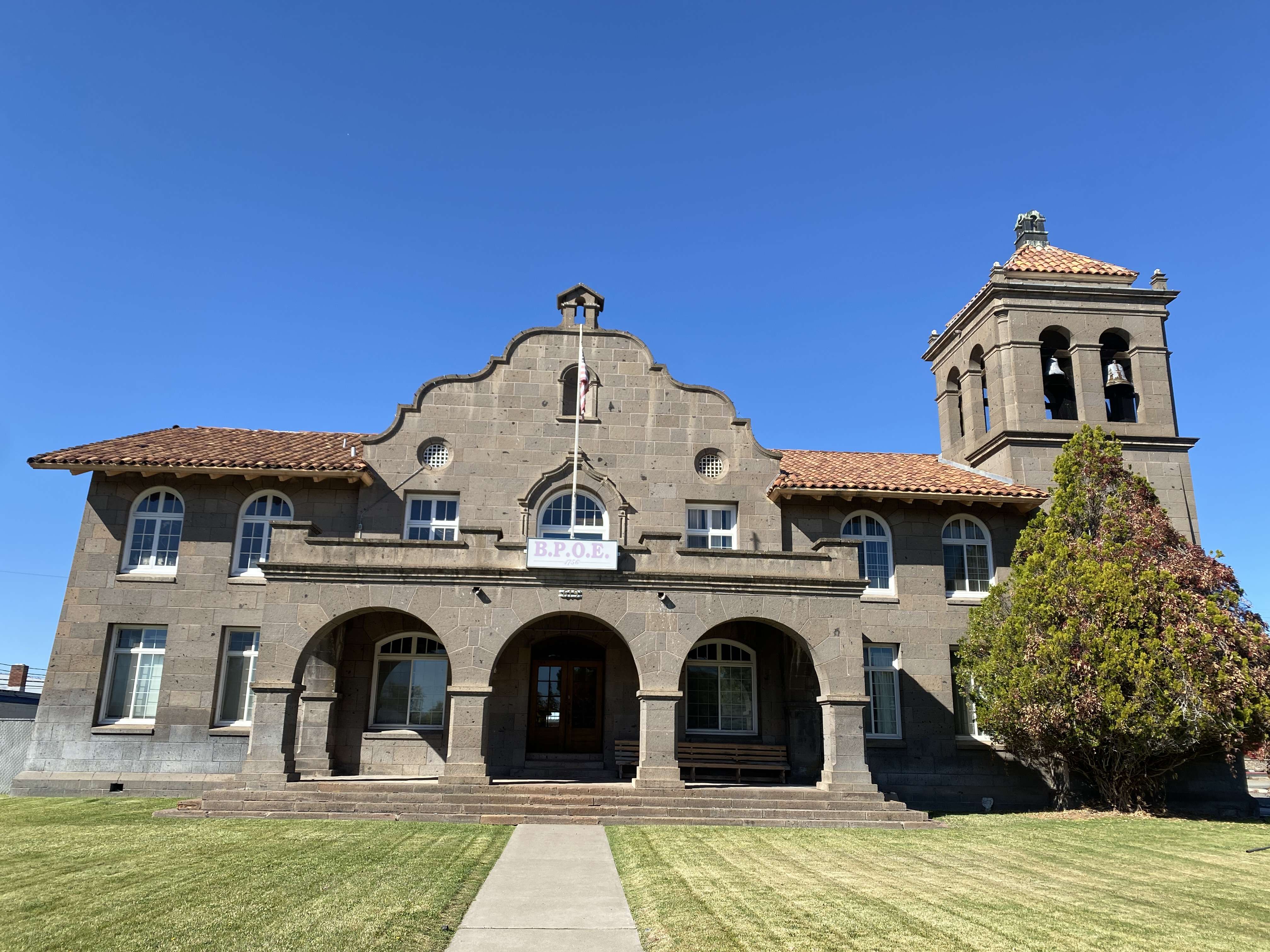
The N.C.O. relocated its headquarters to Alturas following the sale of the southern leg of the Western Pacific Railroad. In 1917, they built a large Mission Revival as the office.
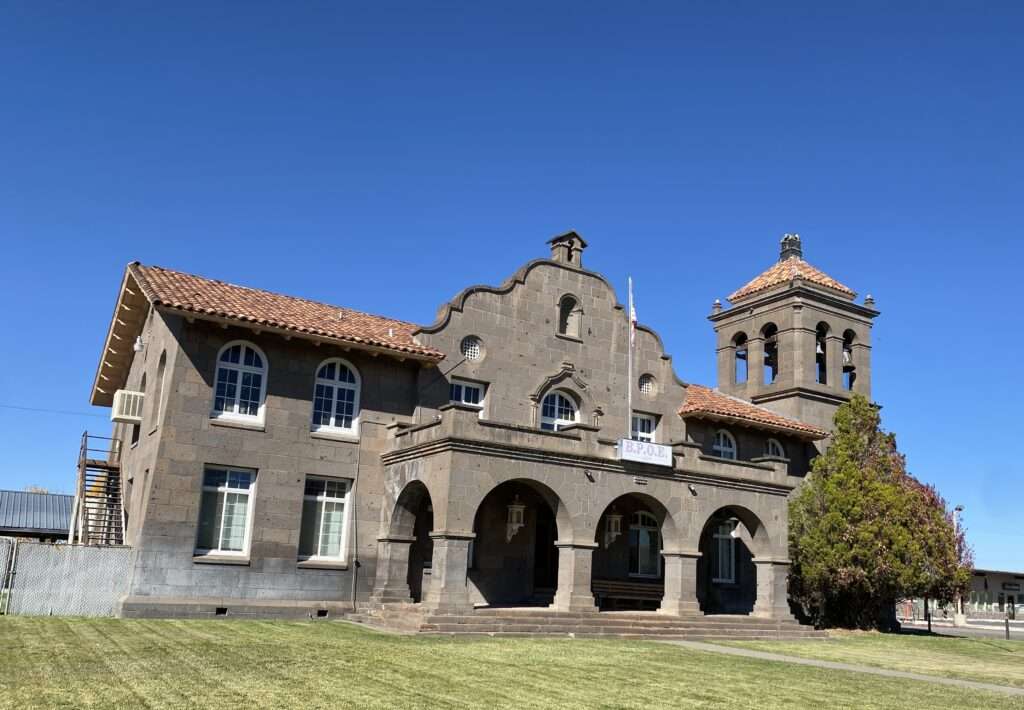
The N.C.O. didn’t have the funds for five bells in the tower. Only one bell was real; the rest were wooden replicas.
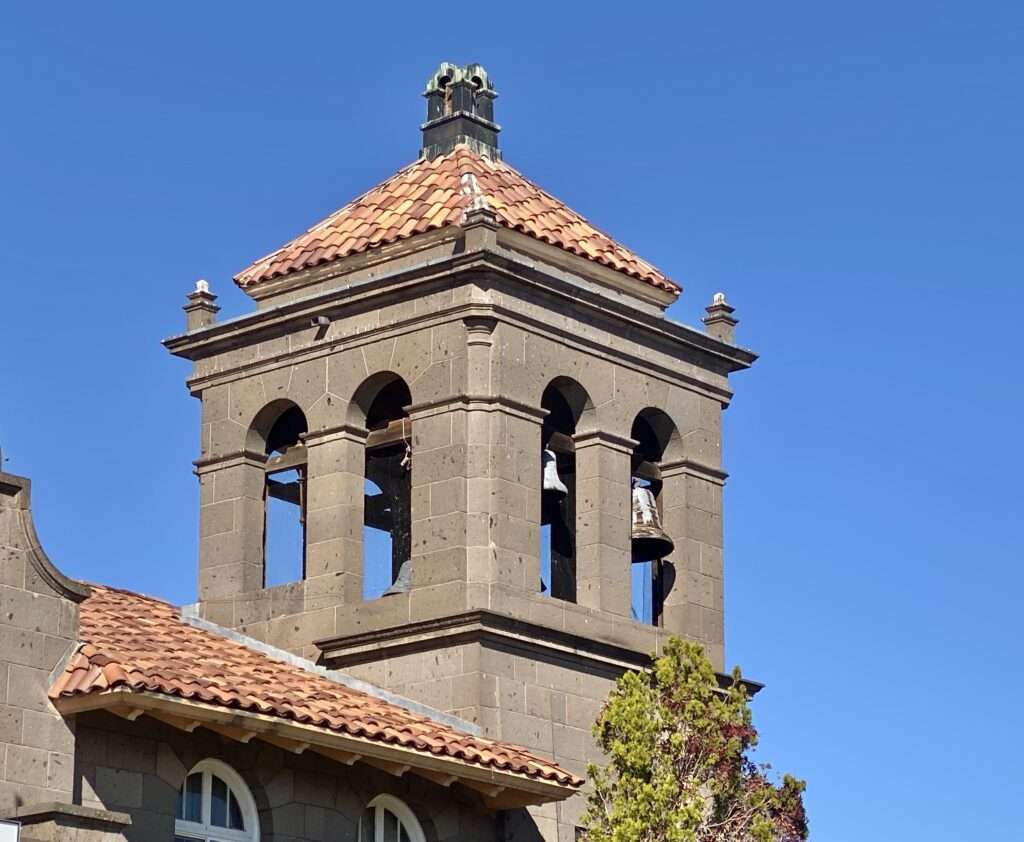
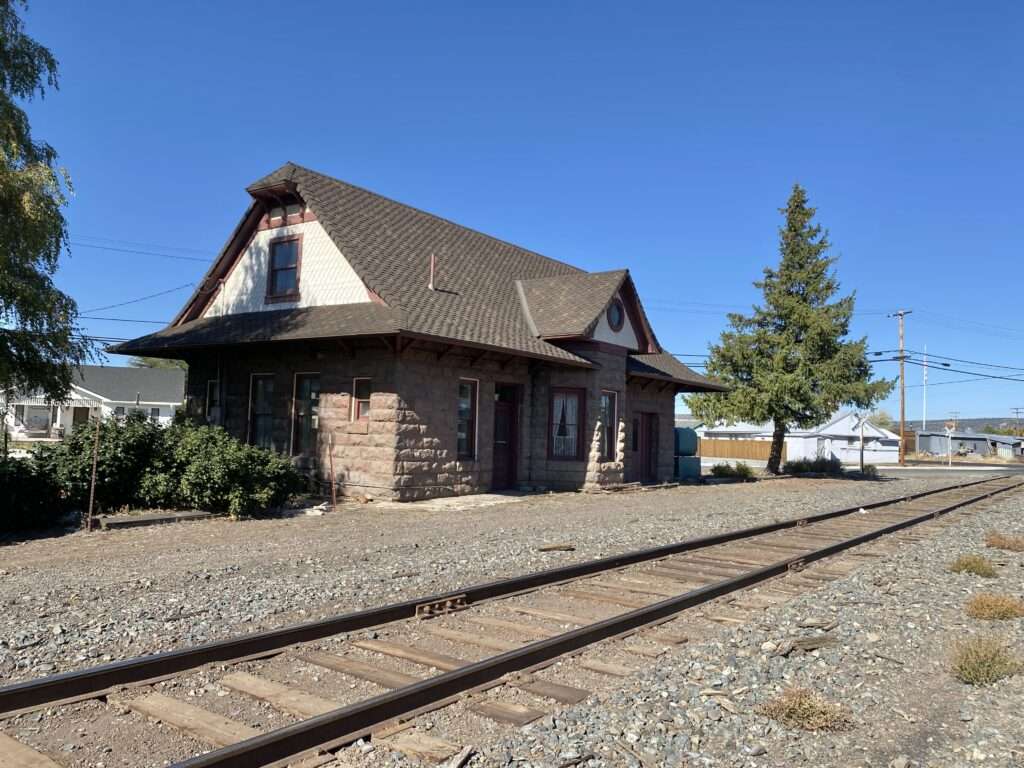
The N.C.O. depot, or “whistle stop,” was built in 1908. The depot is now home to the Alturas Garden Club. In 1915, the depot was moved, stone by stone, to the current location.



“Scary Ranch House”
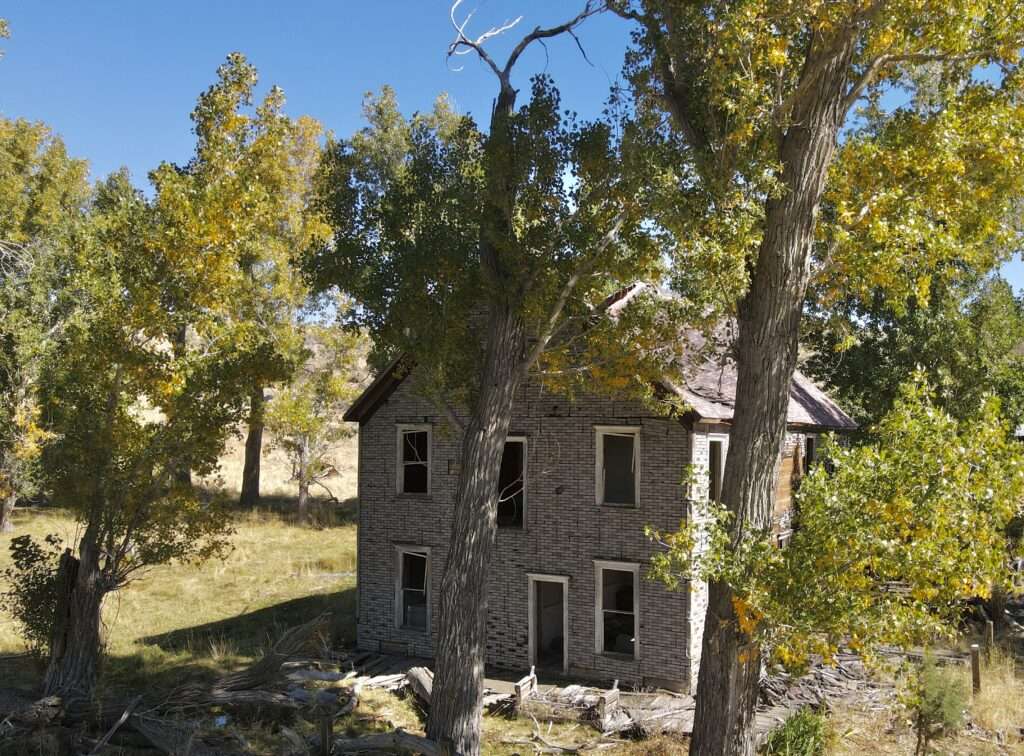
Hubby pointed out what he dubbed the “Scary Ranch House” on our first trip between Klamath Falls and Reno. I don’t have any information on this amazing ranch house.
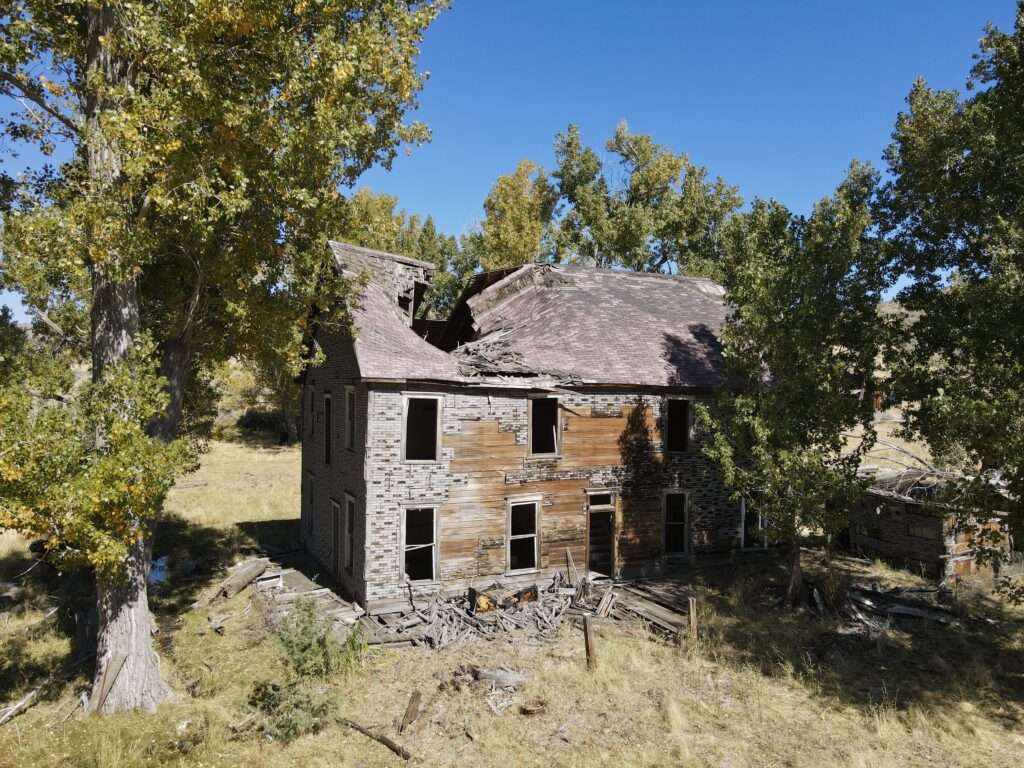
Susanville
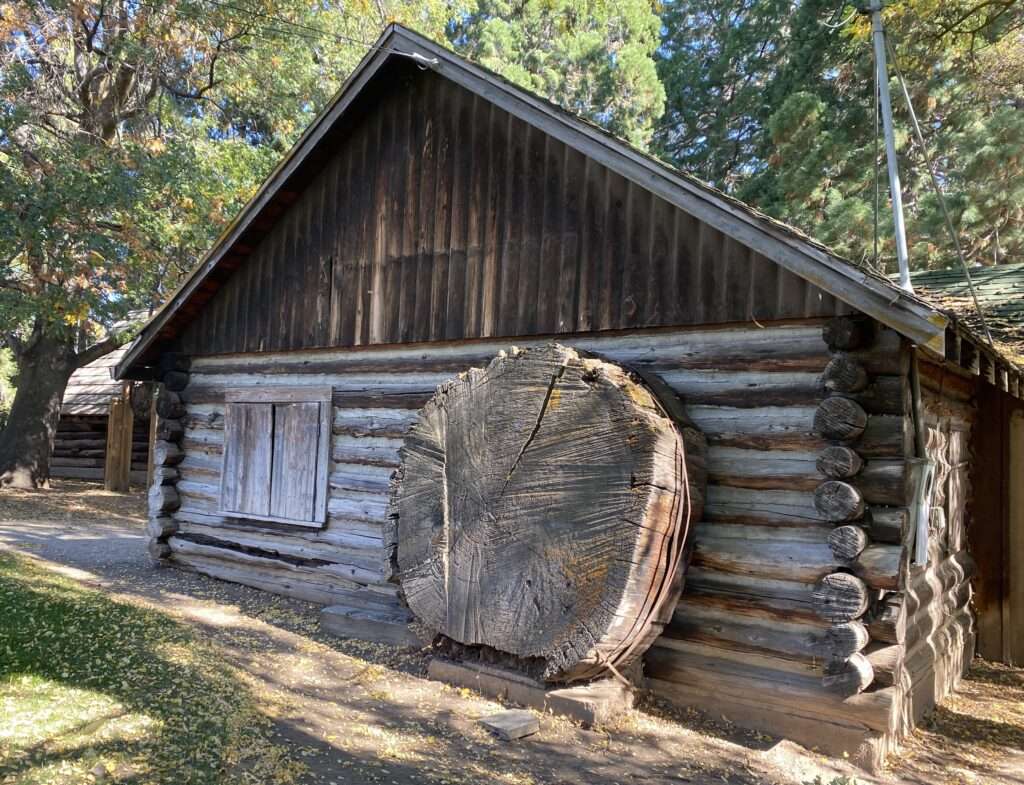
Roop built his fort and trading post in 1854, making it the first non-native structure in Lassen County. In 1861, Susanville and the surrounding area created Roop County, Nevada. Disputes over the border resulted in the 1863 Sagebrush War. Roop’s Fort was the encampment for the Nevadan side of the war. The war lasted a total of 4 hours, with 2 injuries.
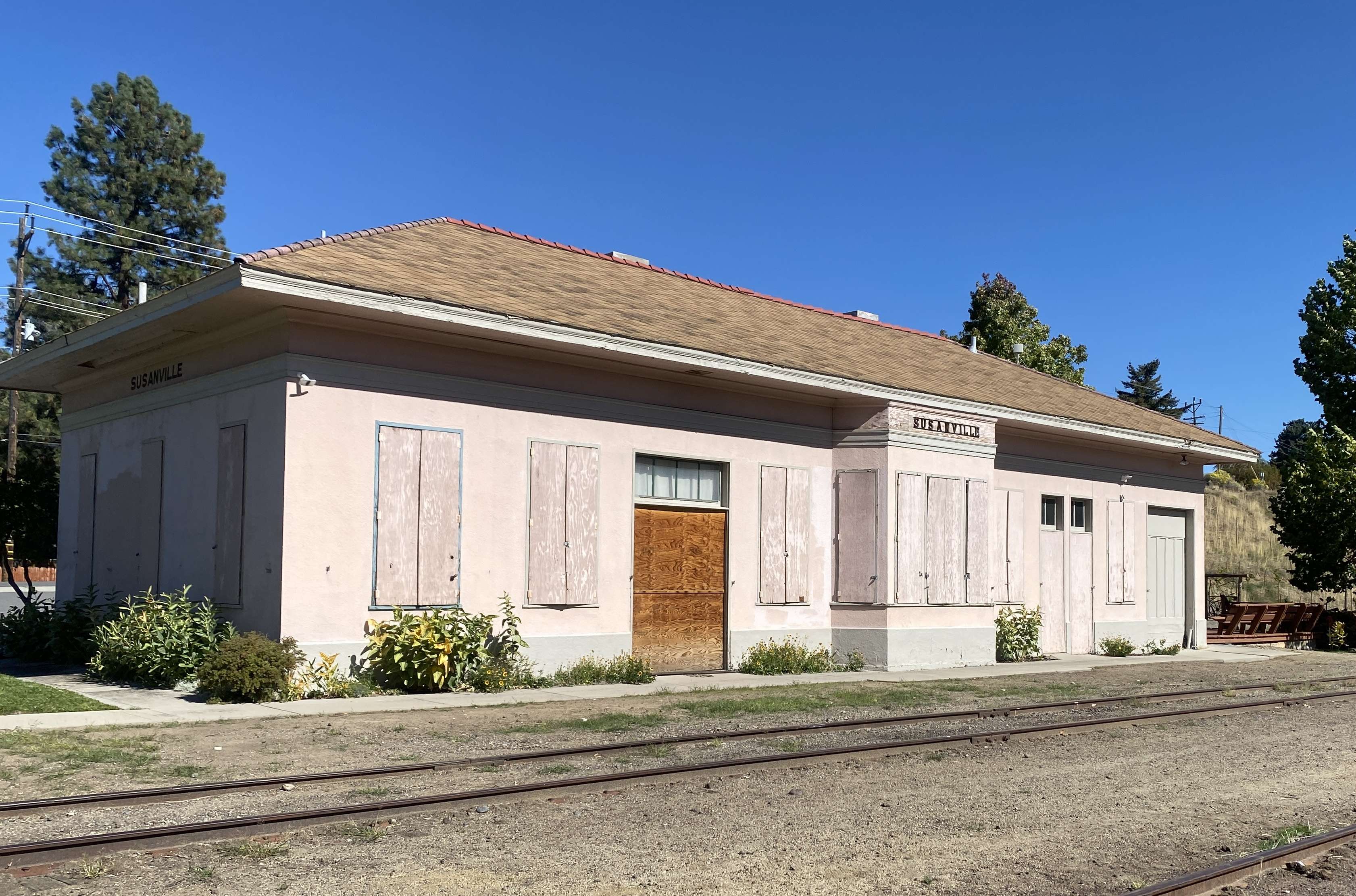
This Fernley & Lassen Railroad depot was built in 1927 to replace a previous depot. It served passengers until 1979. In 1987 the fire department planned to burn the station as a training exercise, but locals protested and saved the historic building.
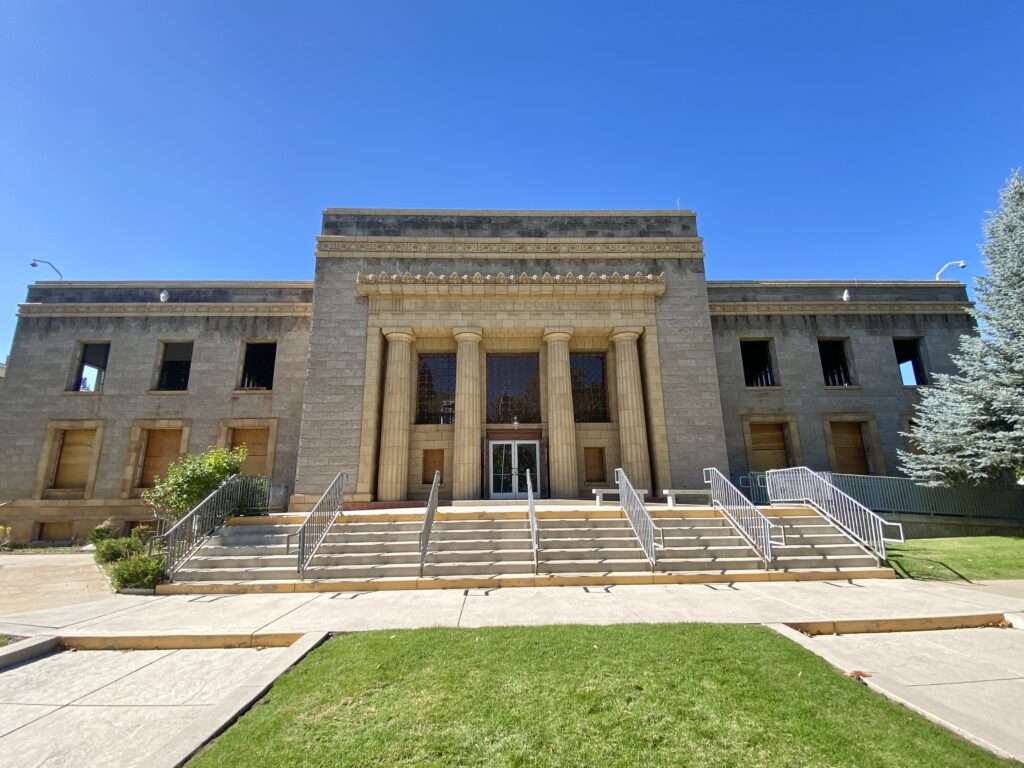
The Lassen County courthouse opened in 1917.
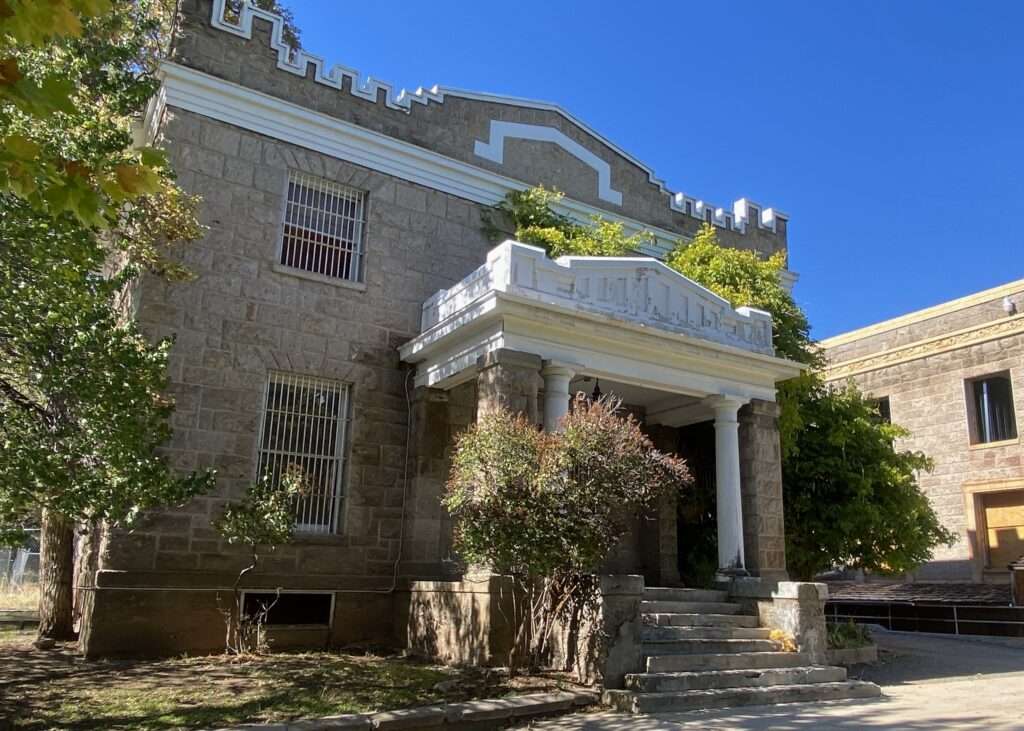
The Lassen County Jail was built in 1911 and condemned in 1971.
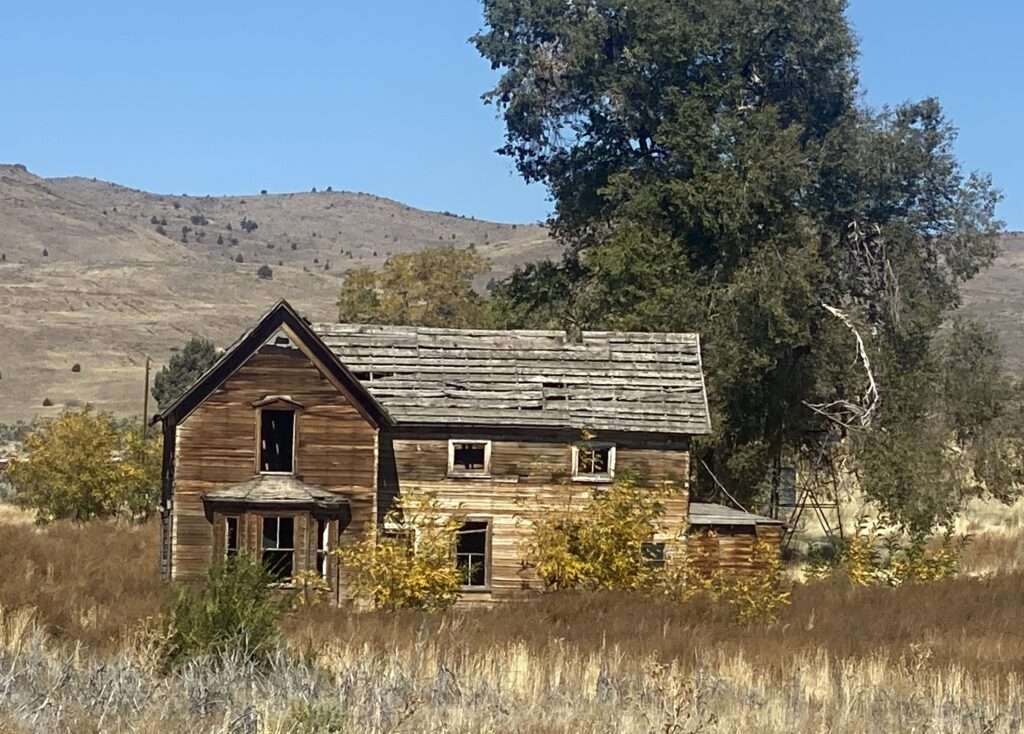
I don’t have any information on this abandoned ranch house, but I thought it was a great building.
Janesville
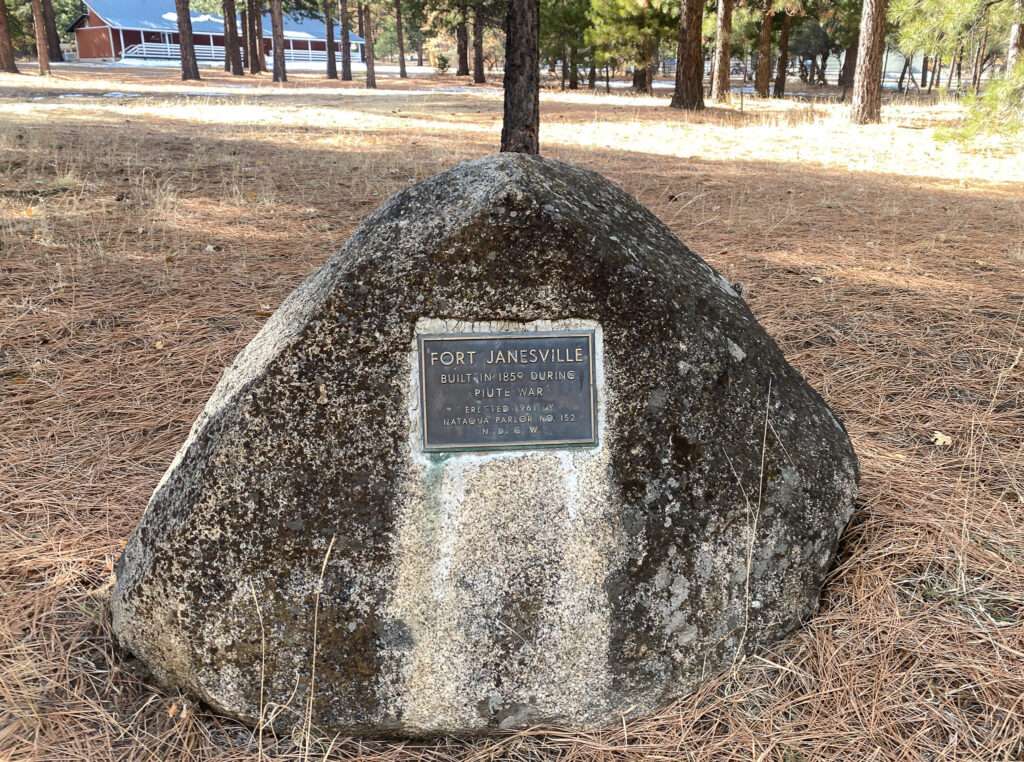
Fort Janesville was active during the Pauite War in 1859. Settlers constructed a loopholed stockade and a bastion on the southeast corner, but an attack never happened.

Janesville lost in a run for the Lassen County Seat to Susanville by only one vote.
Janesville Wigwams

I learned about an old wigwam roadside motel in the book Sierra Highway by Stephen Provost. I was fortunate to meet Stephen and have him sign my book. The old motel is listed as Milford but in nearby Janesville. Thanks to Nevada Expeditions, for the correct location as I was driving.
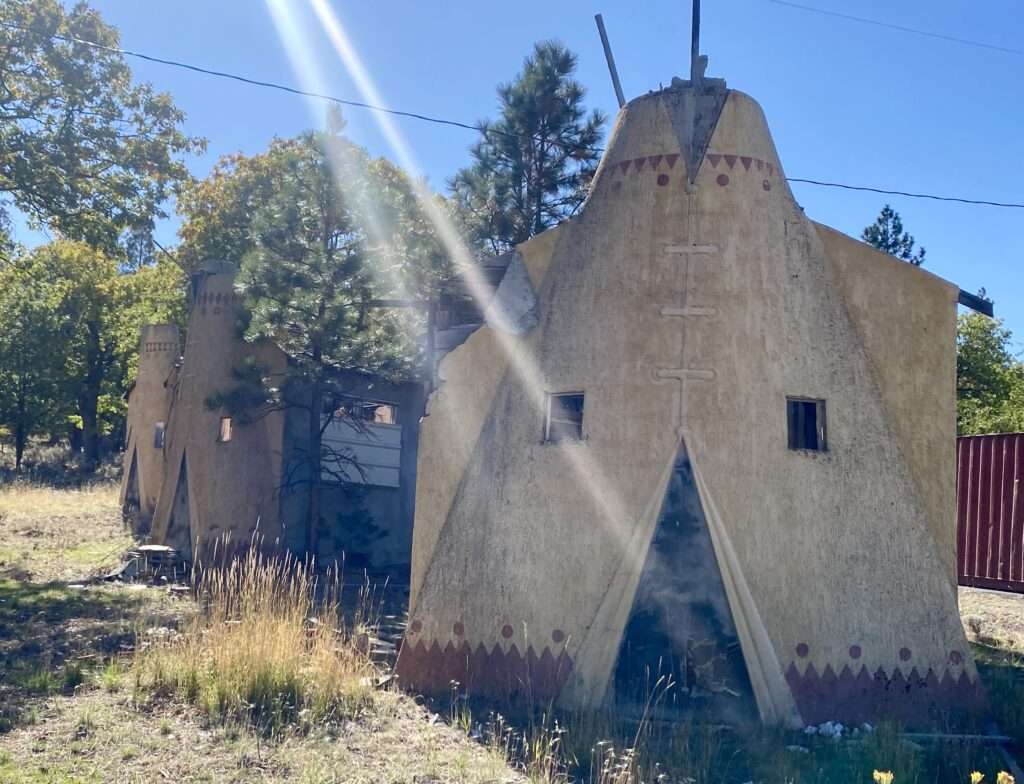
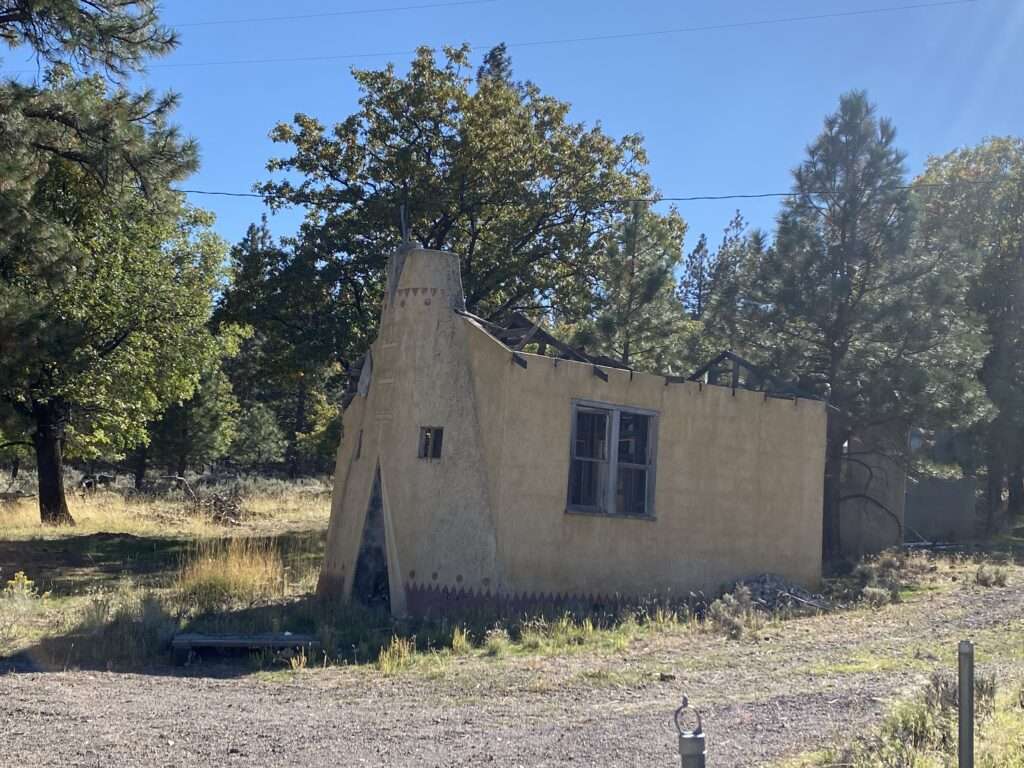
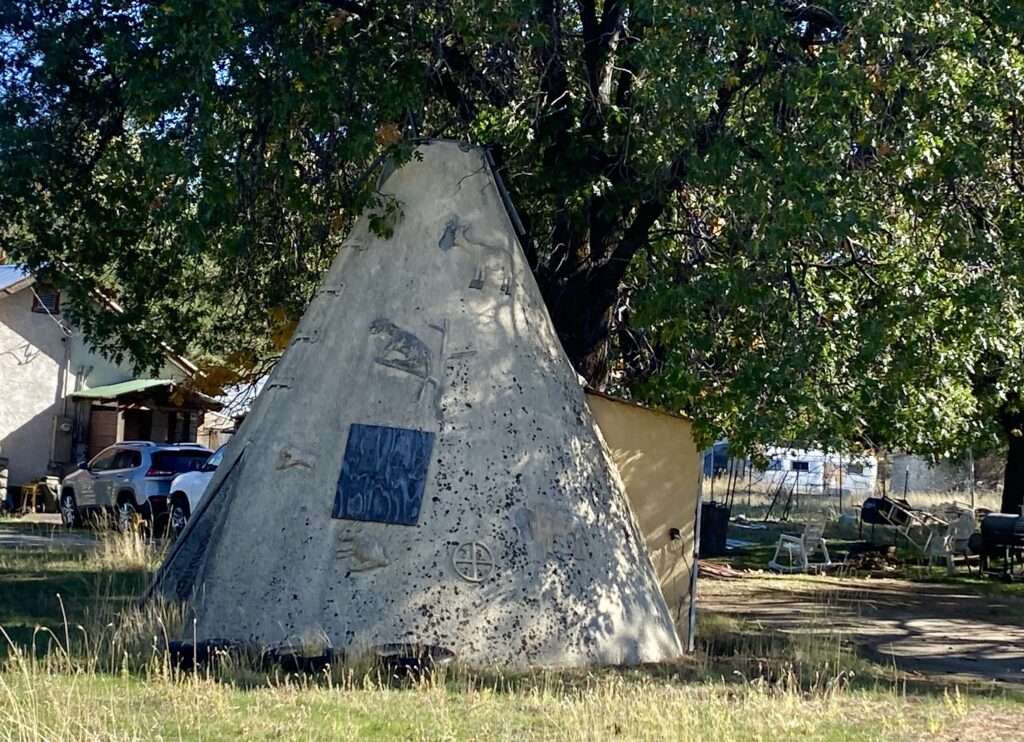
I spoke with the owner of the property; he said his insurance was canceled, so he didn’t want me walking around, but he was happy to tell me about the motel. It was a motor inn on Highway 395 before the road was realigned. Each structure was a suite, bedroom, bathroom and tiny kitchen. There were several teepees around the property. The current owner told me the owner of the motel was racist. When he learned he had to let “blacks and Jews” stay at the hotel, he closed the property.
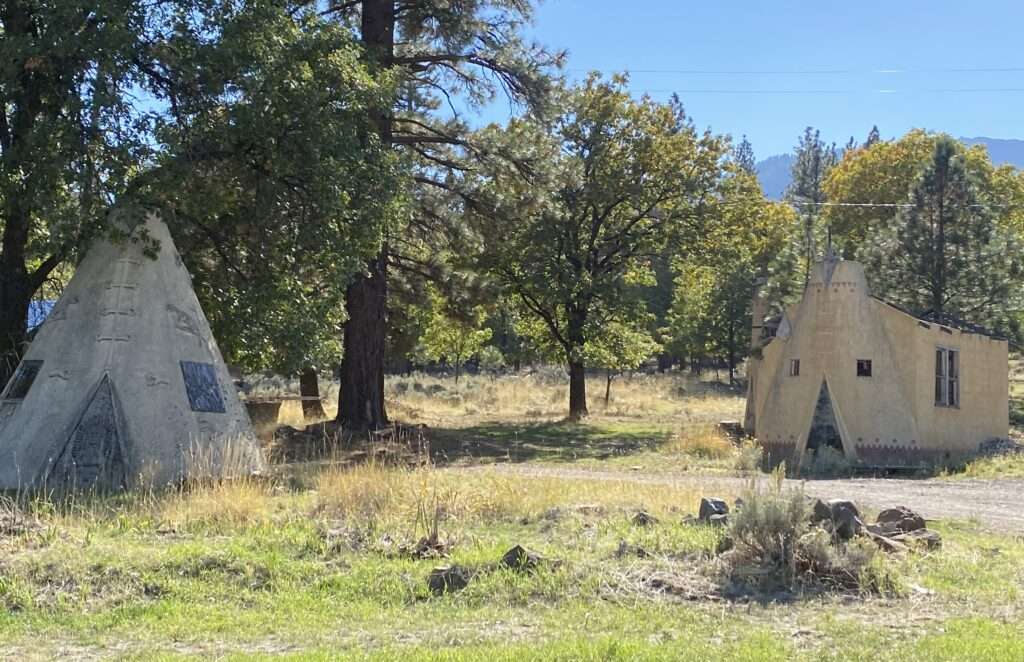
I grabbed pictures from the road.
Doyle
I still remember seeing the Doyle Church on my first drive from Oregon to Nevada. Thankfully, the beautiful church survived a local wildfire.

Henry Butters purchased the Albert E. Ross ranch in Long Valley. He added a church around 1898. Within a few years, they named it St. Mary’s Chapel Constantia. Catholic services were held until 1920 whenever a priest was available. In 1994, It was relocated to its current location in Doyle, next to the cemetery.
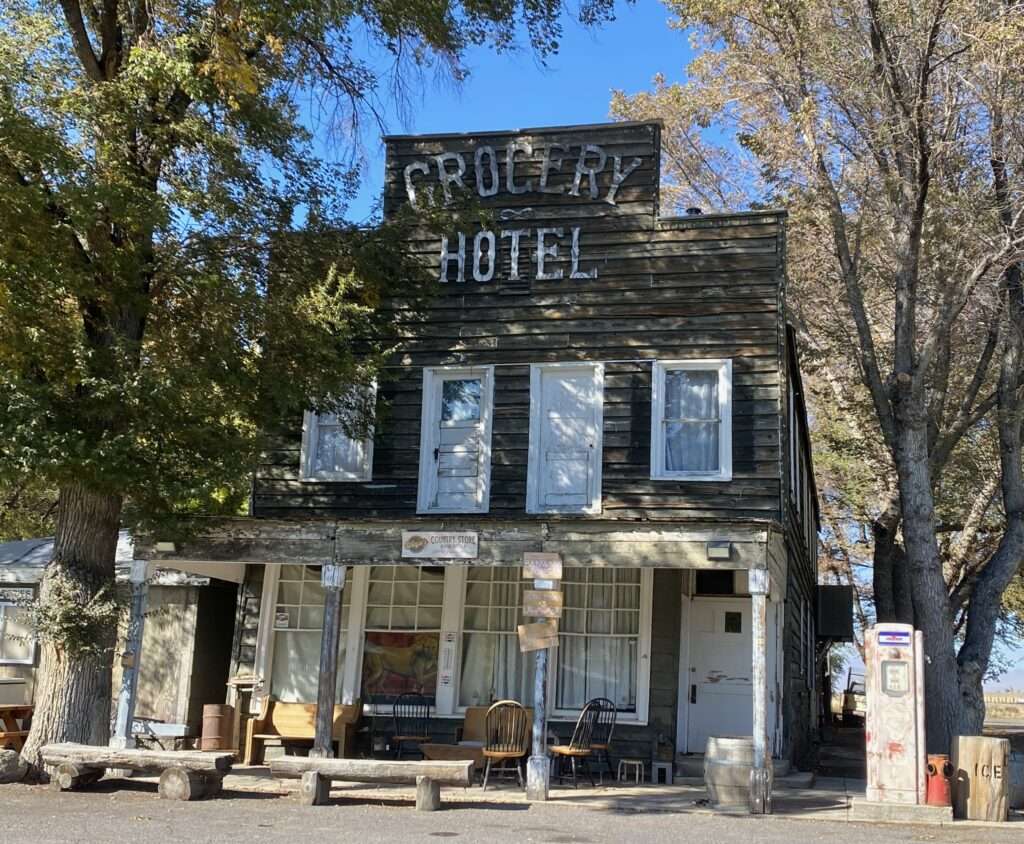
Doyle was settled in the 1870s. It was named in honor of Oscar Doyle, who donated land for the town.
Follow me on social media:
Ralph says
Hi Tami I have to say ; I myself am a Ghost towns enthusiast and really enjoy your photographs and work
Thank you for being you and sharing these
If you have minute . Google The Nelson house Emerson loop road Oregon. It was an Icon to photographers for years before it burned down in a wildfire 3 years ago. Thank you Tami All the Best* Ralph Smith Ore city , Oregon
Tami says
Thank you. I’m glad you enjoyed the site.
That house is amazing! I bet I drove not far away multiple times when I lived in Idaho and drove to Portland. A very sad loss to history.
Anonymous says
Thank you for this history which covers an often forgotten part of our past.
Tami says
Thanks, I’m glad you enjoyed it. People ask if I’ll write about Virginia City or Bodie, but I love the forgotten history. I have been thinking about combining the all the sites along 395 and 95 into their own articles. Kind of like a driving guide to history.
ERIK GOETSCH says
Great pics and info on Lassen county. I really enjoyed all of it. I used to live in Standish during most of the 1980’s. You wrote “Standish Hall was built in 1907. A store was on the ground floor and the upstairs was a meeting place for various social groups. The store remained open until 1954”. I would like to correct you on some of that. The store remained opened from the 1950’s to the late 1980’s. Was called Neils Mercantile. One stop shop at least in the 1980’s. Still had a meat counter with fresh cut meat. You could get pretty much all of your groceries there. In addition to that they sold hardware items and work clothes. This was the same with Heards Market in Litchfield. They also sold a lot of western wear including cowboy boots. Various groups were still meeting upstairs of the Standish Hall as well late into the end of the 1980’s.
Tami says
I appreciate the information. I found the closing date online but nothing talked about the later years or what the stores carried. I’ll update the article so there will be more information out there.